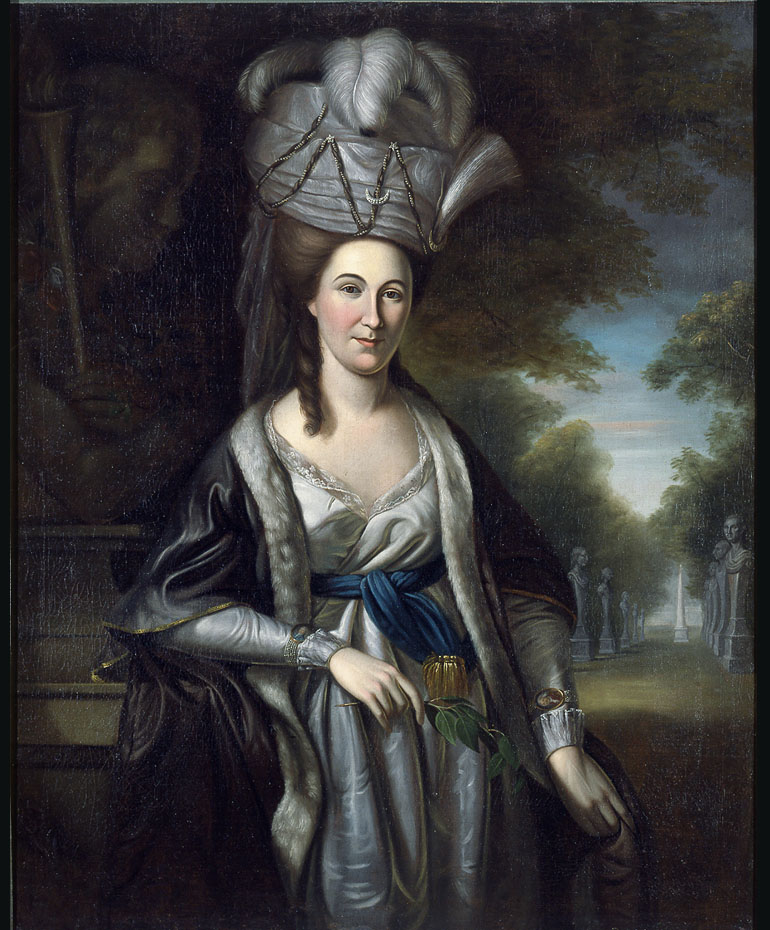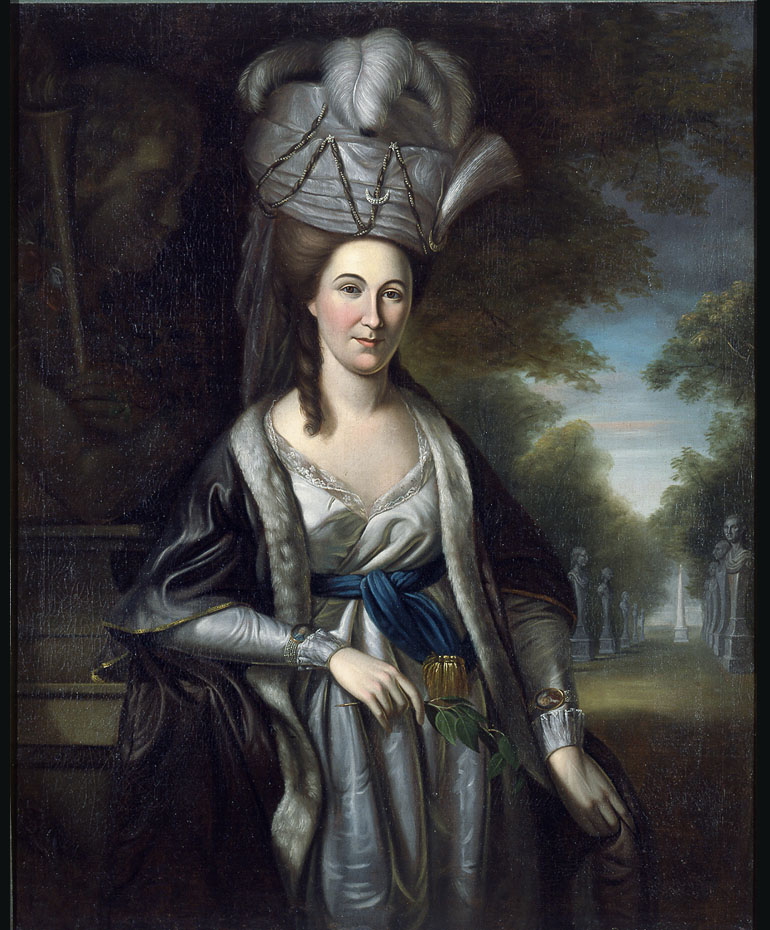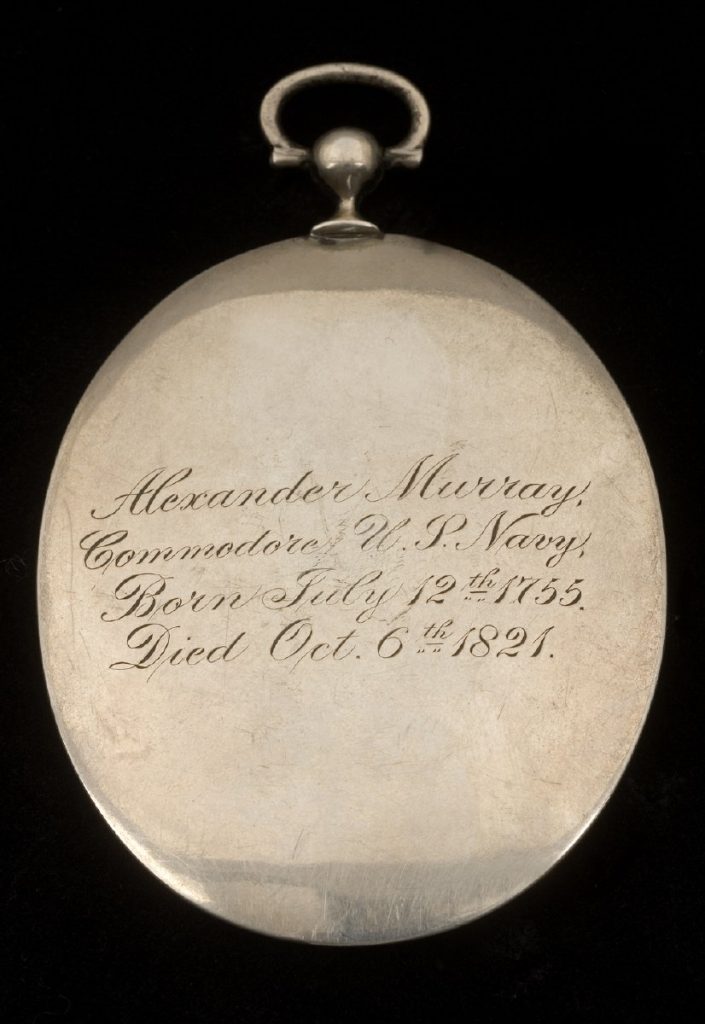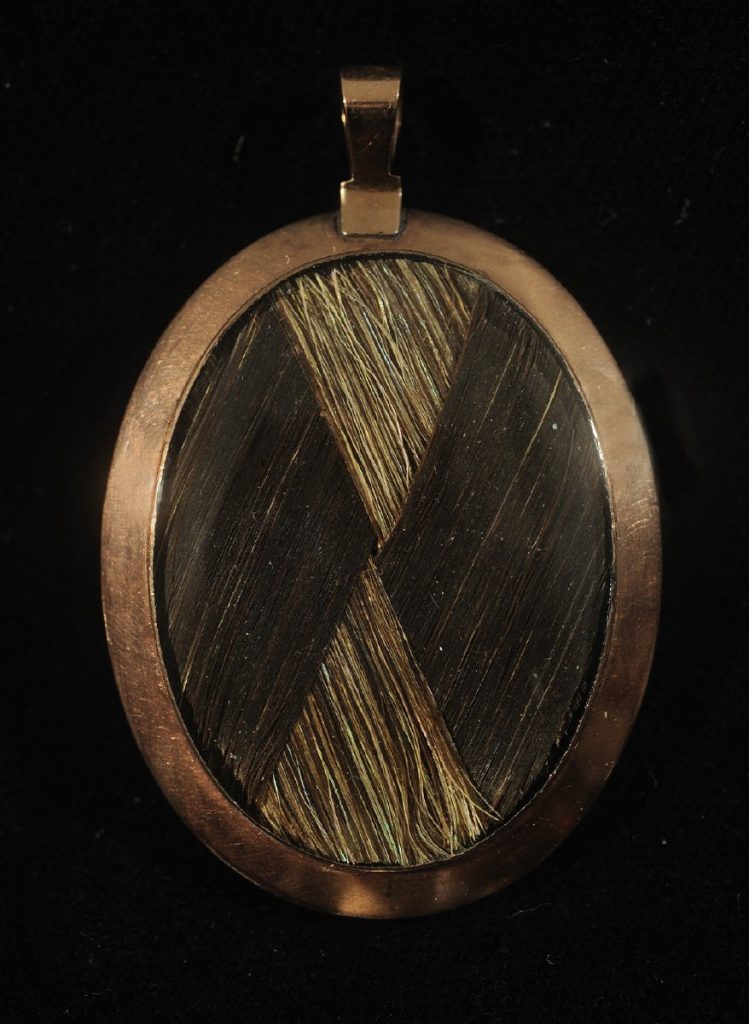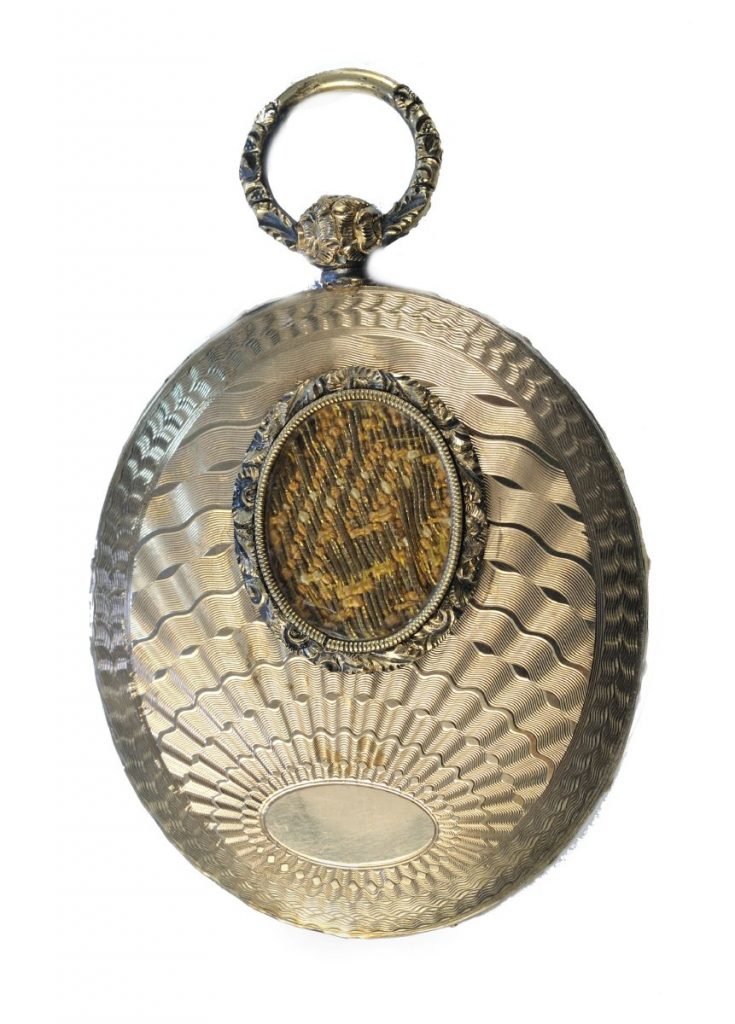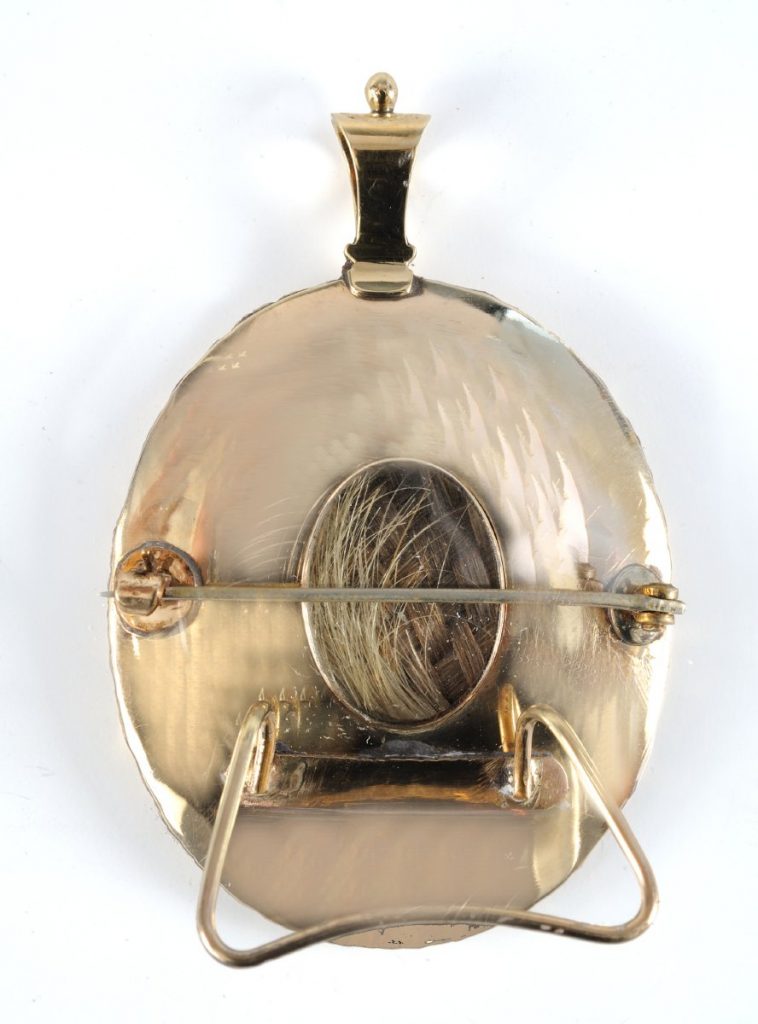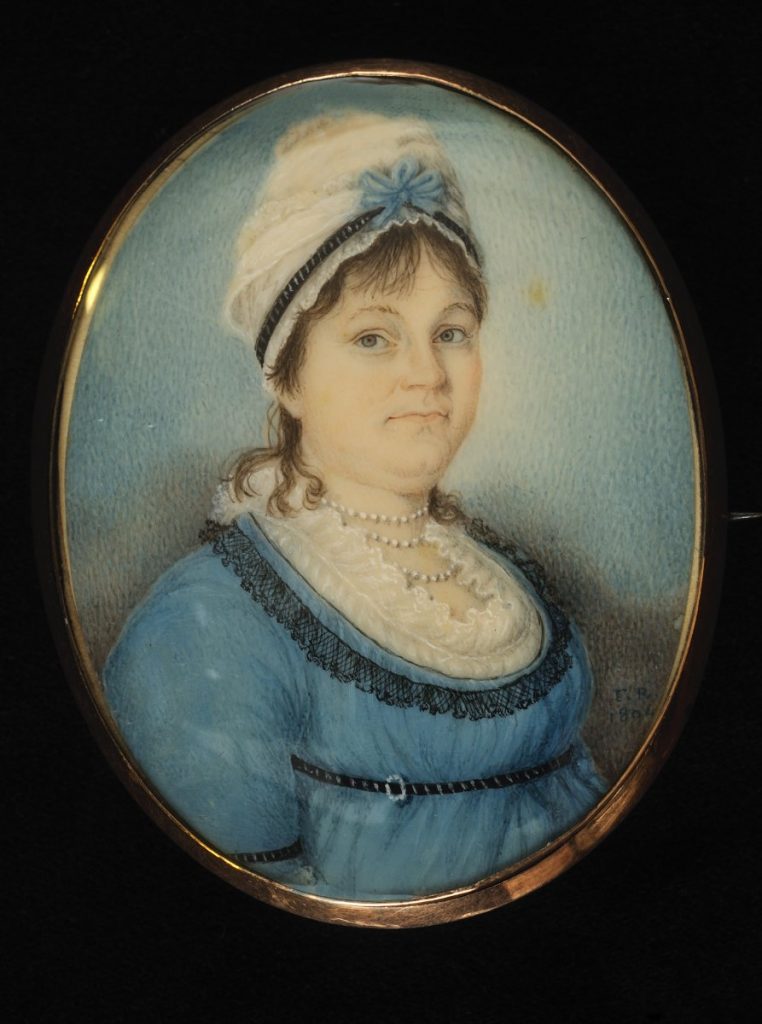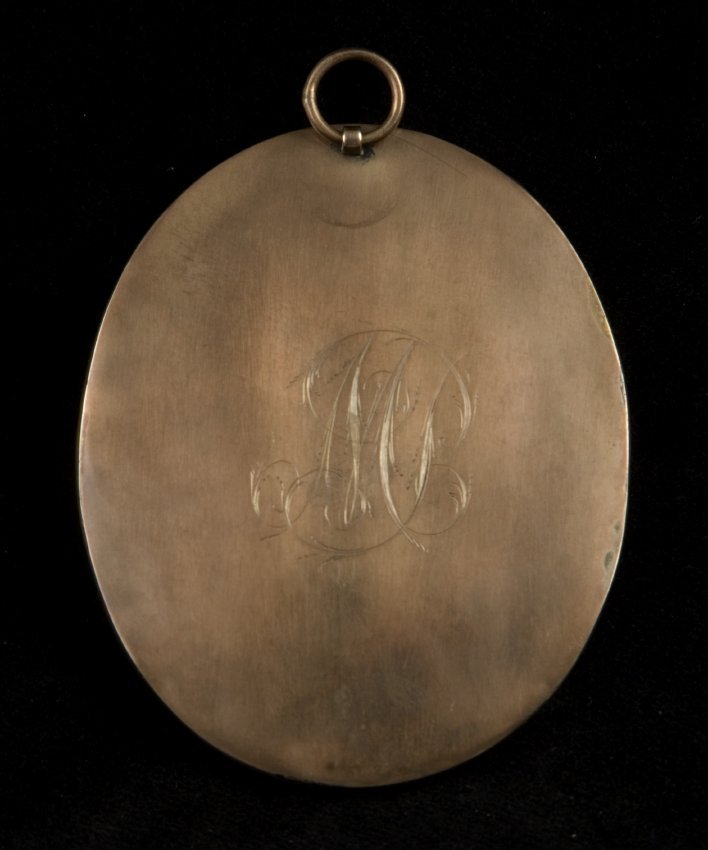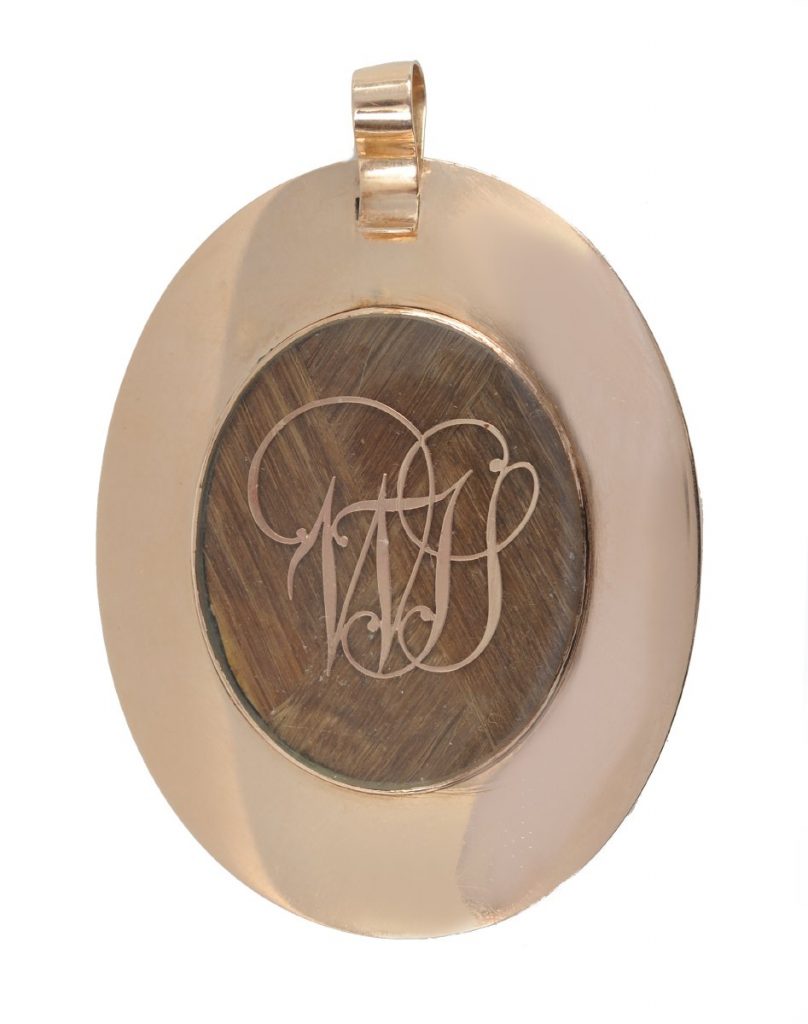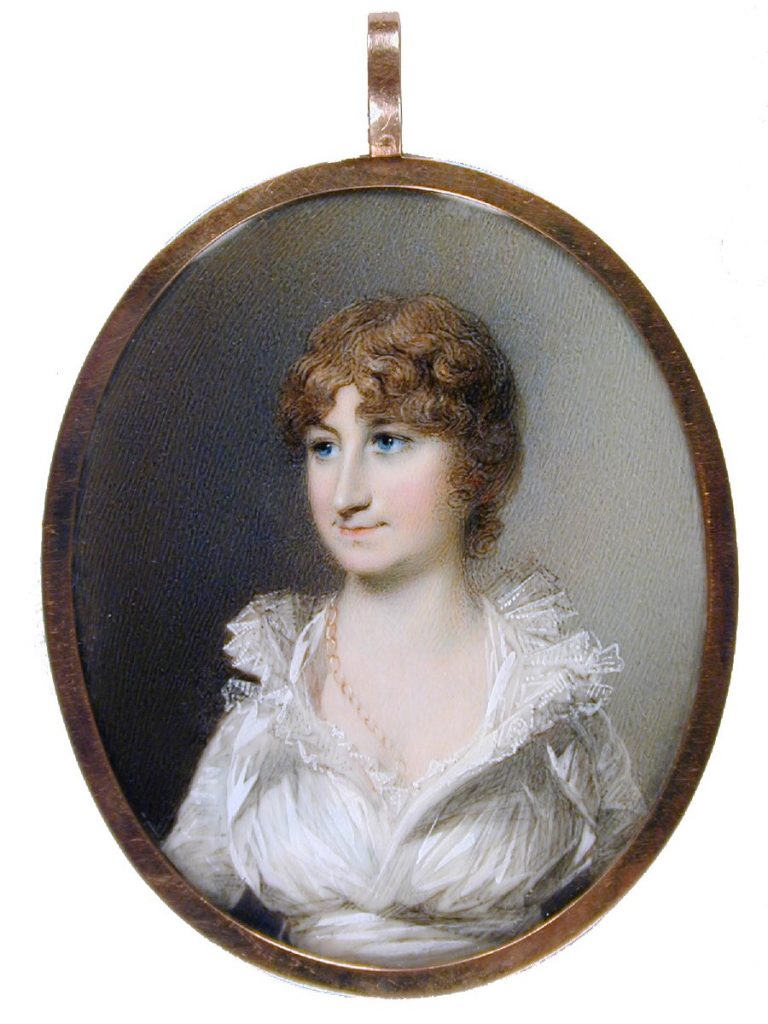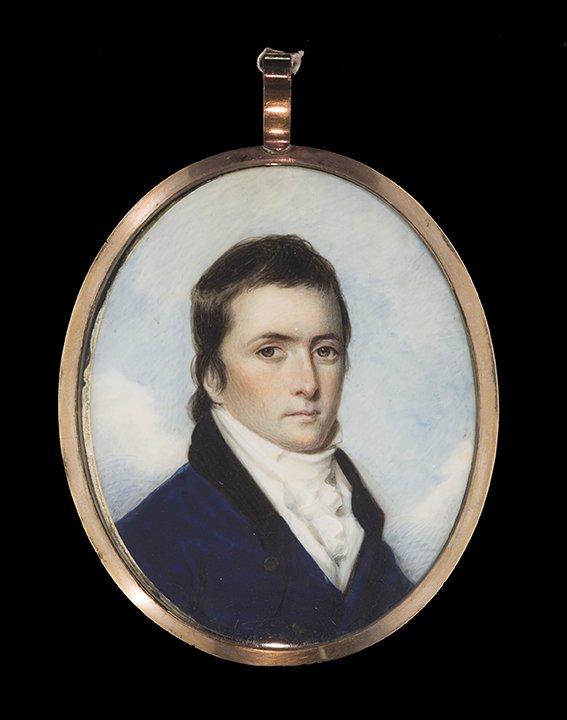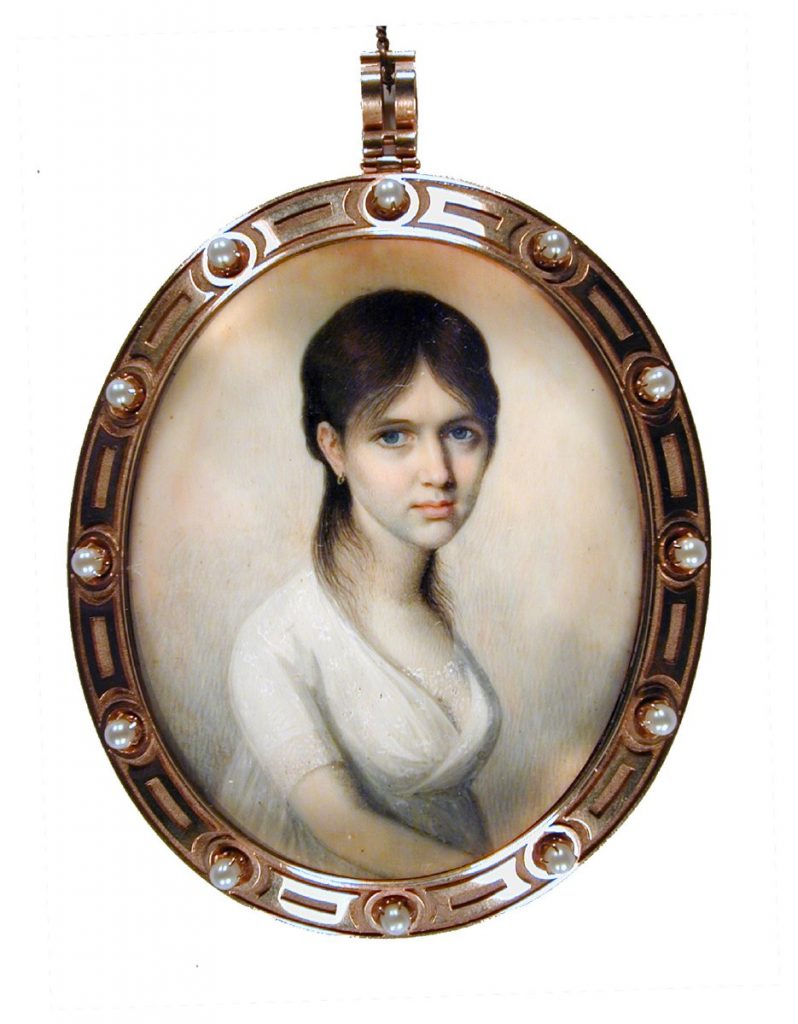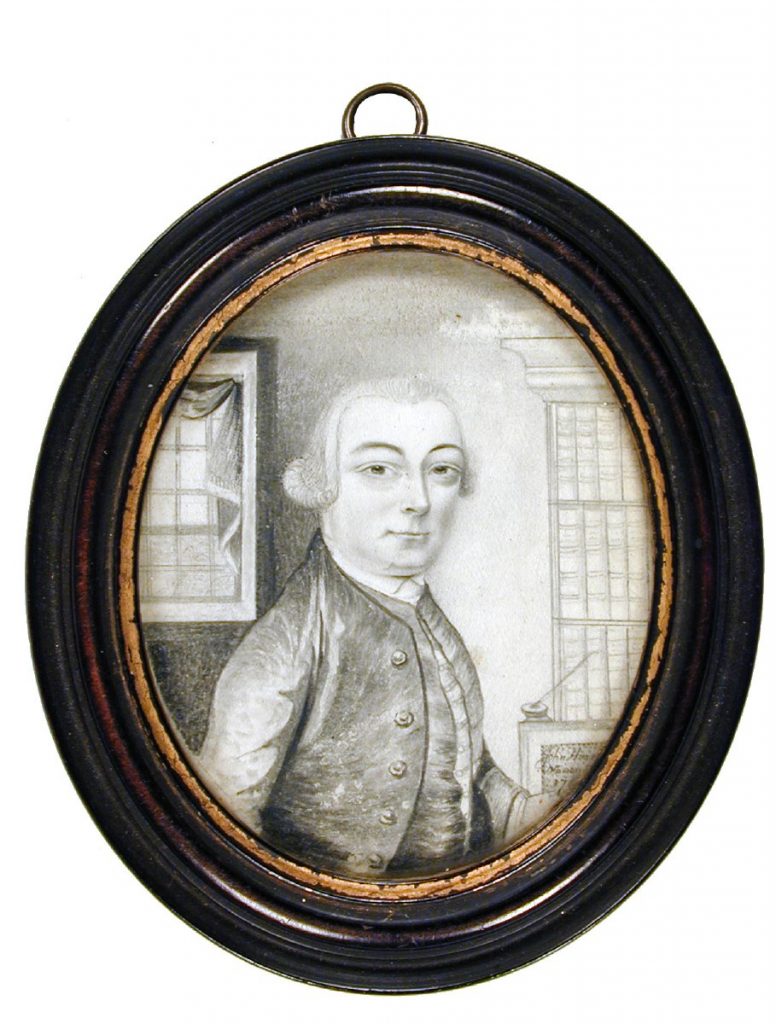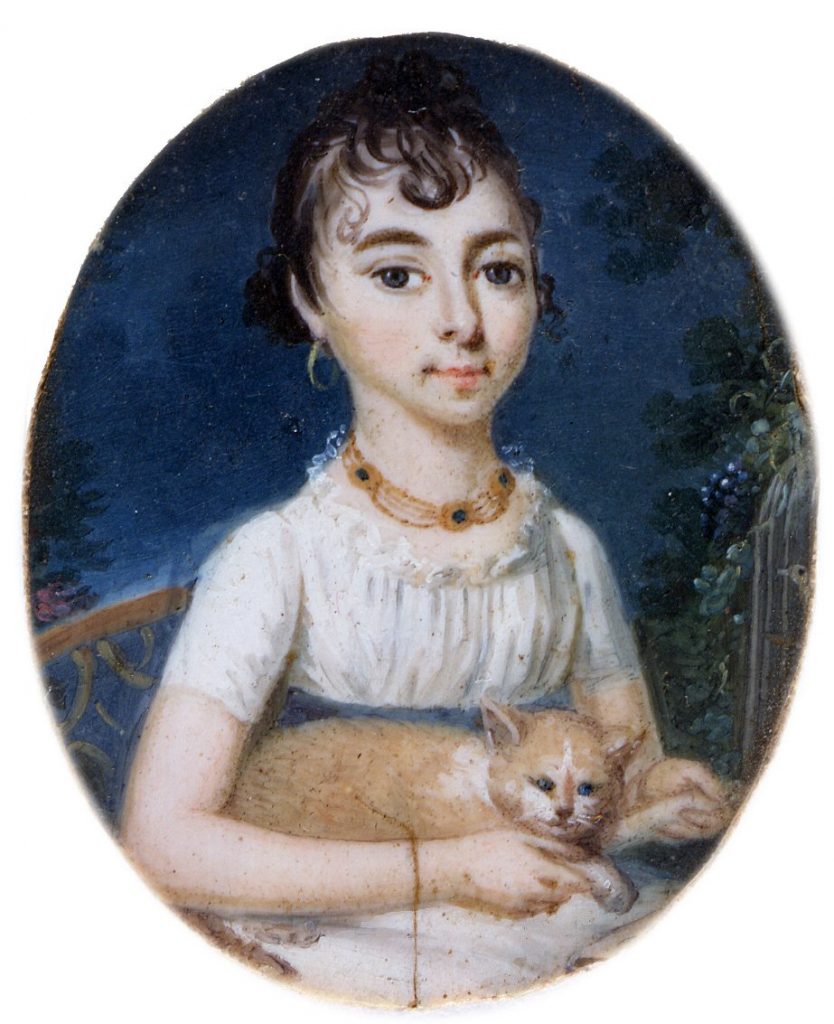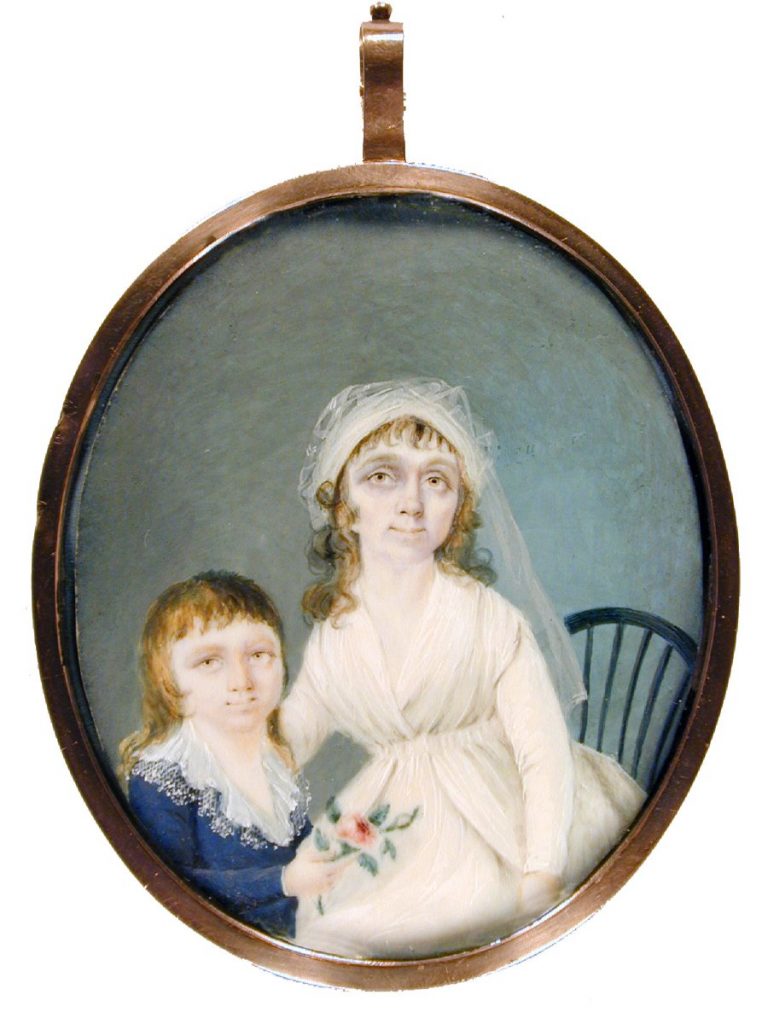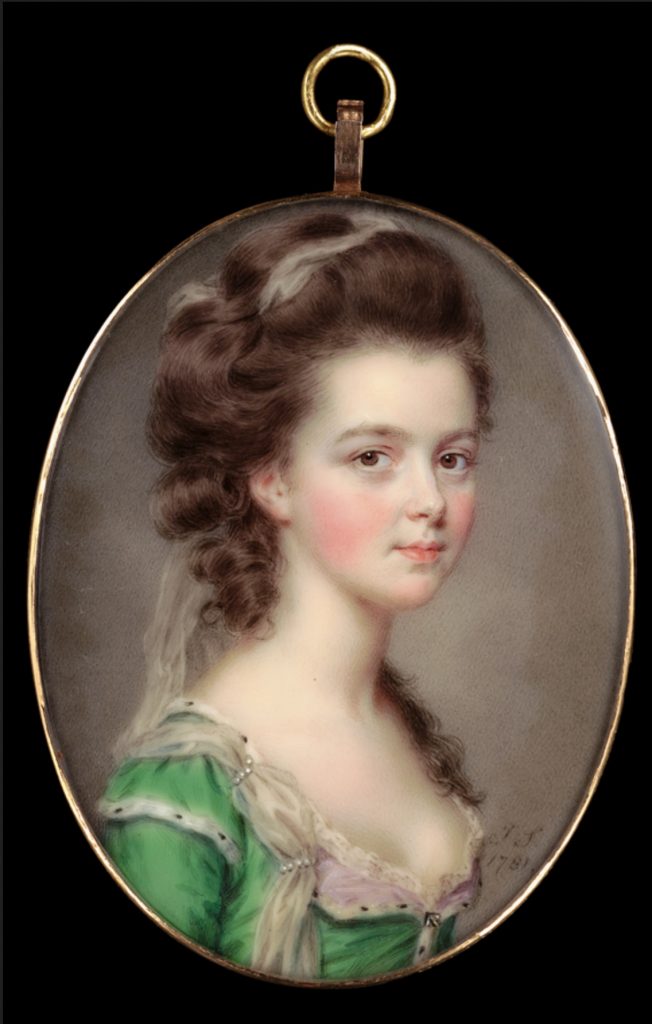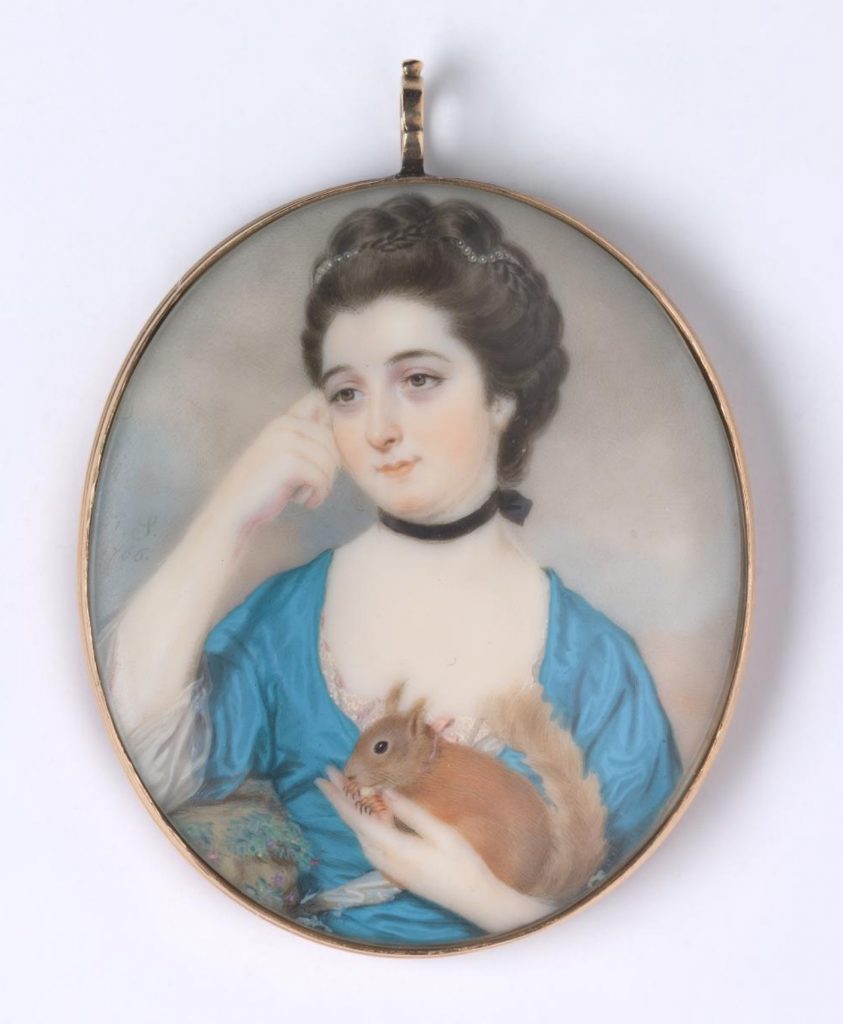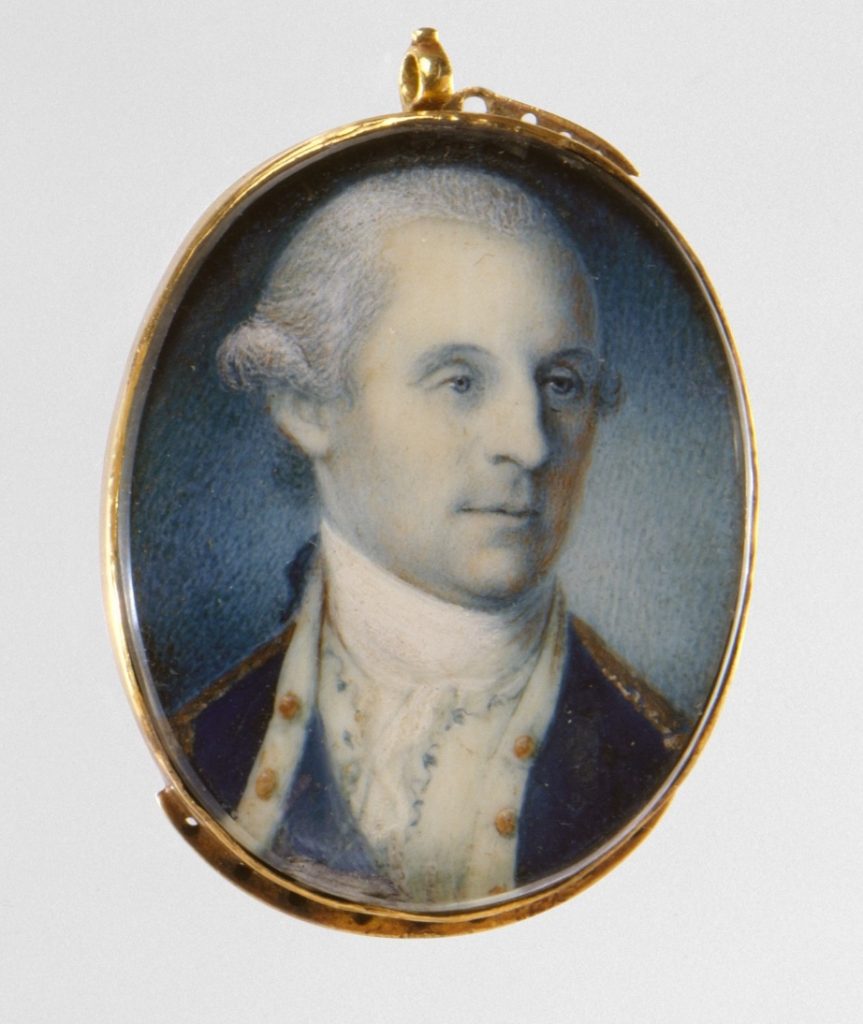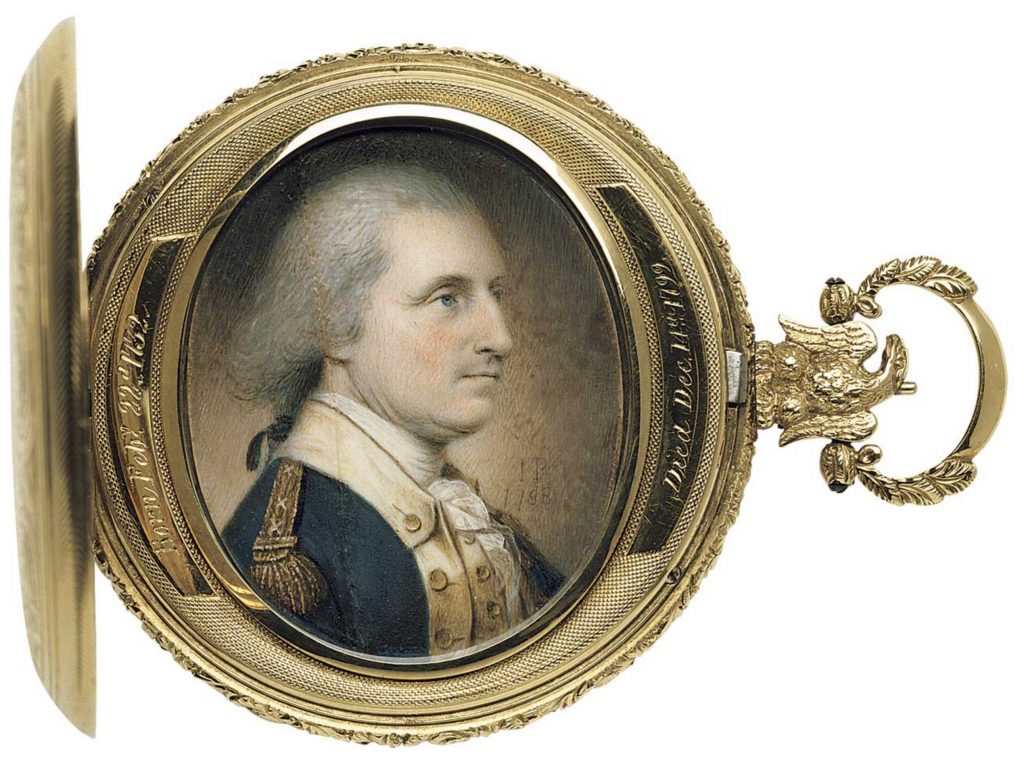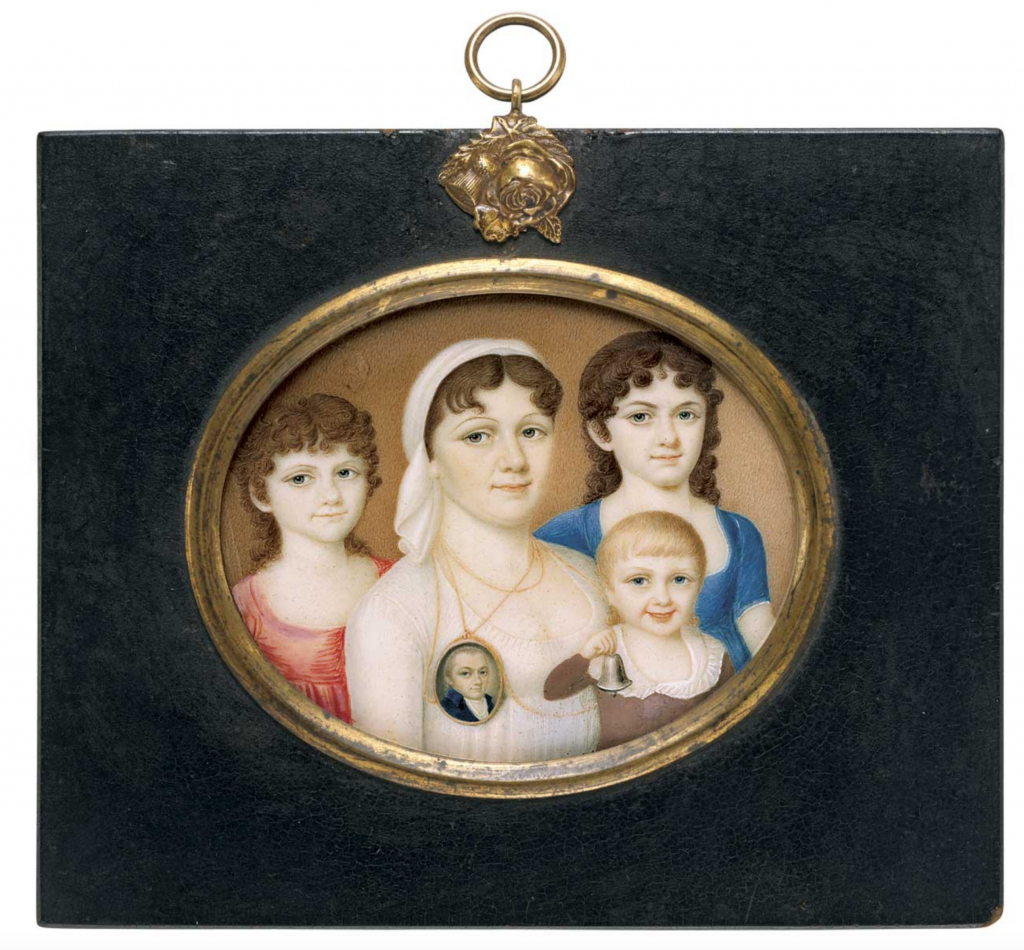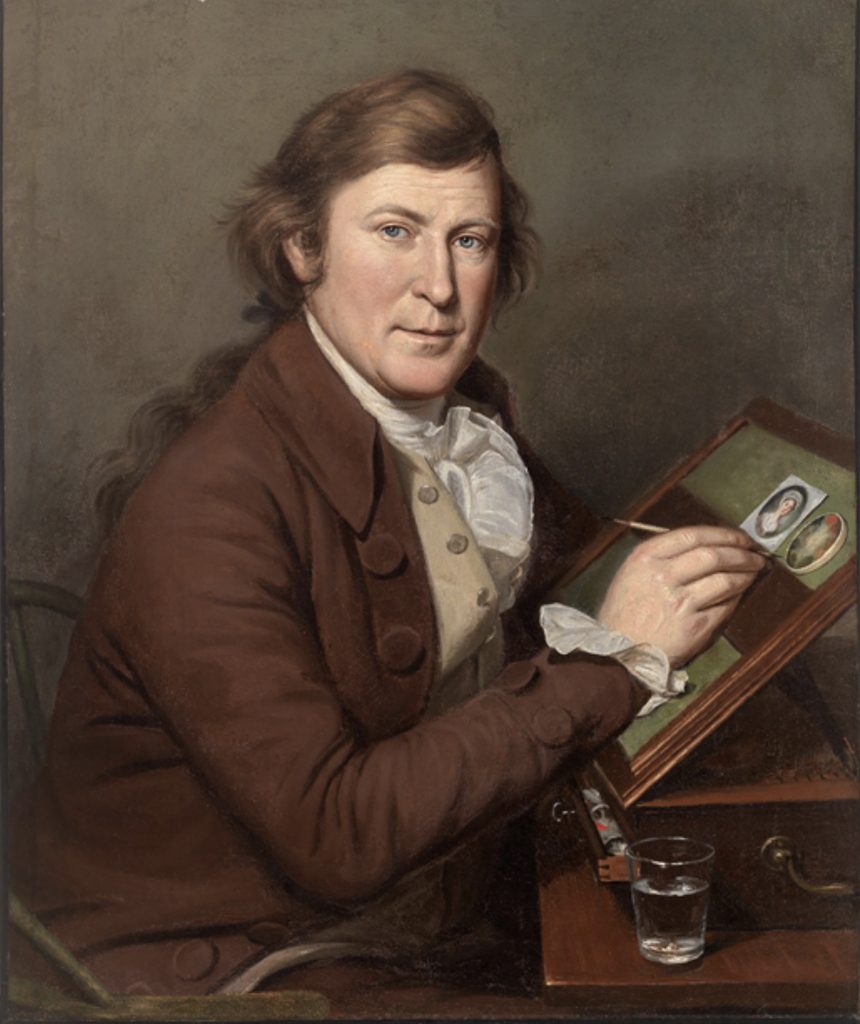Long before the advent of digital or print photography, portrait miniatures served as intimate keepsakes given by the sitter to a loved one to convey their affection and represent their bond. During the American Revolution, these tiny likenesses were carried by soldiers and public officials away from home, and worn by women as necklace pendants or wristlet ornaments. This lesson introduces students to the art of the portrait miniature, and invites them to envision twenty-first-century equivalents.
Suggested Grade Level
Elementary and Middle School
Recommended Time Frame
One fifty-minute session
Objectives and Essential Questions
Students will:
- learn why portrait miniatures were popular during the American Revolution,
- explore the lives of individuals from the Revolutionary generation who were the subjects of portrait miniatures, and
- examine the work of Charles Willson Peale and other artists who produced miniatures.
Materials and Resources
(in order of appearance)
- Charles Willson Peale, Mary White Morris, ca. 1782 [see the gallery below]
- Capt. James Smith, Portrait of the Smith Family, ca. 1807 [see the gallery below]
- See, Think, Wonder thinking routine
- Tiny Treasures: A Closer Look at Miniature Portraits from the Gibbes Museum of Art video
- Portrait miniatures [see the gallery below]: Alexander Murray, Amelie-Maxime-Rosalie de Grasse and Melanie-Veronique-Maxime de Grasse, Baron Frederick Henry Weissenfels and Mrs. Mary Shumur Weissenfels, Burwell Bassett, Capt. William Henry Bruce, Friedrich Wilhelm, baron von Steuben, George Baylor, James Hamilton, Joseph Fox, Marie-Joseph-Paul-Yves-Roch-Gilbert du Motier, marquis de Lafayette, Nancy McCampbell Hays, Thomas Posey, William Palfrey, William Truman Stoddert, Unknown Sitter, Margaret Izard, Mrs. Benjamin Snead, Jr., Eliza Izard, Joseph Yates, Mrs. Abraham Crouch, John Blake, Matthew Ridley, Unknown Sitter (with cat), Mrs. Thomas Fell and her son William, Mrs. Russell nee Cox, Lord Carteret’s daughter, George Washington by Charles Willson Peale, George Washington by James Peale, The Artist’s (Pierre Henri’s) Family
- Charles Willson Peale, James Peale Painting a Miniature, 1795 [see the gallery below]
- Two Portrait Miniatures by Charles Willson Peale webpage
Background Knowledge
Students should be familiar with colonial America and the time in history during which the American Revolution took place.
Sequence and Procedure
Share the full-sized portrait of Mary White (Mrs. Robert) Morris by Charles Willson Peale with students, asking them to use the “See, Think, Wonder” routine—What do you see? What do you think about that? and What does it make you wonder?—to record their reactions to the image, paying particular attention to what Mrs. Morris is wearing on her wrists. Next, share the portrait of the Smith Family by Capt. James Smith, performing the same analysis. Ask students to consider what the two paintings have in common.
Have students share their observations with one another and the class.
Explain that portrait miniatures were small paintings given by the subject to a loved one—long before the advent of digital or print photography—to convey their affection and to represent their bond. In the eighteenth century, a drawing or painting or other work of art was the only way a person’s likeness could be preserved for memory, and for many in early America, only one likeness may have ever been produced in one’s lifetime. Miniatures were often commissioned to mark important milestones in life, including marriage, long absences and death. During the American Revolution, women wore these tiny likenesses as necklace pendants or as wristlet ornaments as a reminder of their loved ones—many of whom were serving in the Continental Army, and men serving as soldiers or in public service far from home carried portrait miniatures with them. Invite students to share how they remind themselves of loved ones separated by time or distance today.
As time permits, show the four-minute video Tiny Treasures: A Closer Look at Miniature Portraits the Gibbes Museum of Art for more background about portrait miniatures.
Assign students to small groups to examine one or two portrait miniatures from the gallery below. Students should record their answers to the following prompts for each portrait:
- Describe the person (subject) in the portrait.
- How old do you think the subject of the portrait is?
- From the way the subject is dressed or what they are depicted with, what do you think the subject’s profession is—explain what leads you to this conclusion.
- For whom do you imagine the subject had the miniature created?
- Describe what you notice about the way the portrait is contained or what is displayed on the reverse side of the portrait miniature.
Share the collection information and story of each portrait subject—have the students assess whether their inferences to the prompted questions were correct.
Assessment and Demonstration of Student Learning
Ask students to design a portrait miniature for a figure from history. As inspiration, show students Charles Willson Peale’s painting of his brother James painting a portrait miniature. Have them record a description of how the portrait’s subject would dress and present themselves to be remembered, supported by primary source evidence about the subject and his or her accomplishments. Describe any special features or designs that would be part of the miniature portrait’s reverse side. Ask students to note the intended recipient of the portrait miniature, as well as their relation to the subject. Students should present their designs to the class.
If time permits, students could stimulate their thinking about this activity by designing a portrait miniature for themselves before creating one for a historical subject.
Extension
Visit Two Portrait Miniatures by Charles Willson Peale at the American Revolution Institute website to learn more about this famed artist and two of his works in the Institute’s museum collections.
Revolutionary Achievements Category
Independence, National Identity
Exploring the Revolution Category
The Revolutionary War, The Legacy of the Revolution
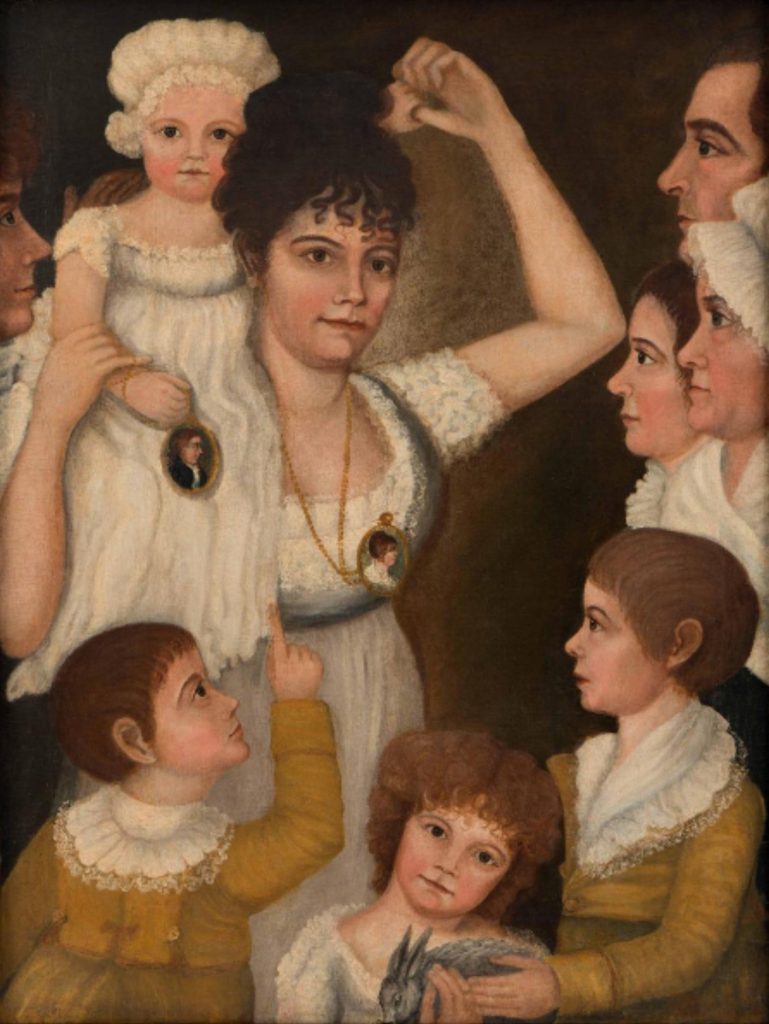
Portrait of the Smith Family
attributed to Capt. James Smith
ca.1807Colonial Williamsburg
Although nine flesh-and-blood figures appear in this painting (and one gray rabbit), two more people are represented via miniature portraits. Around her neck, the central woman wears a miniature on a chain, the image being a bust-length likeness of a woman in profile. Another miniature on a chain is grasped by the child on the central woman's shoulder, this being a bust-length likeness of a man in profile.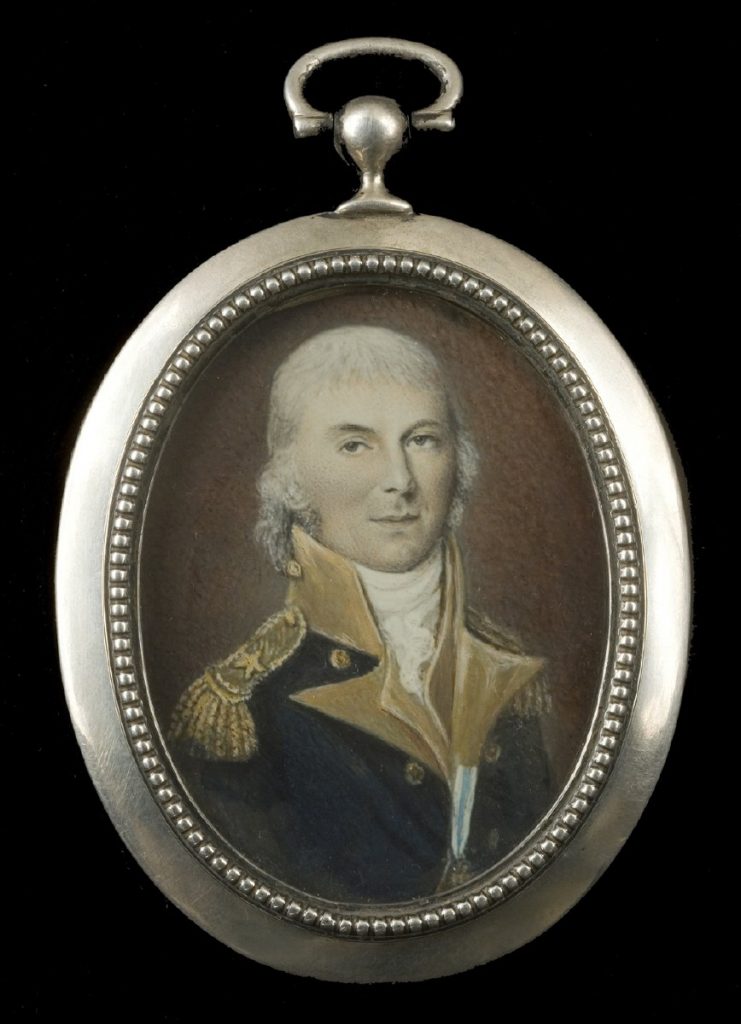
Alexander Murray
early nineteenth centuryThe American Revolution Institute of the Society of the Cincinnati
frontWatercolor-on-ivory portrait miniature of Alexander Murray (1755-1821), an officer in the Continental Navy during the Revolutionary War and original member of the State Society of the Cincinnati of Pennsylvania, by an unknown American artist. Murray is wearing a military uniform consisting of a dark blue coat with a high standing collar, buff-colored facings, gold buttons, and a gold epaulet with one star on each shoulder. A gold Society of the Cincinnati Eagle insignia suspended from a long light blue-and-white ribbon hangs from his right lapel.
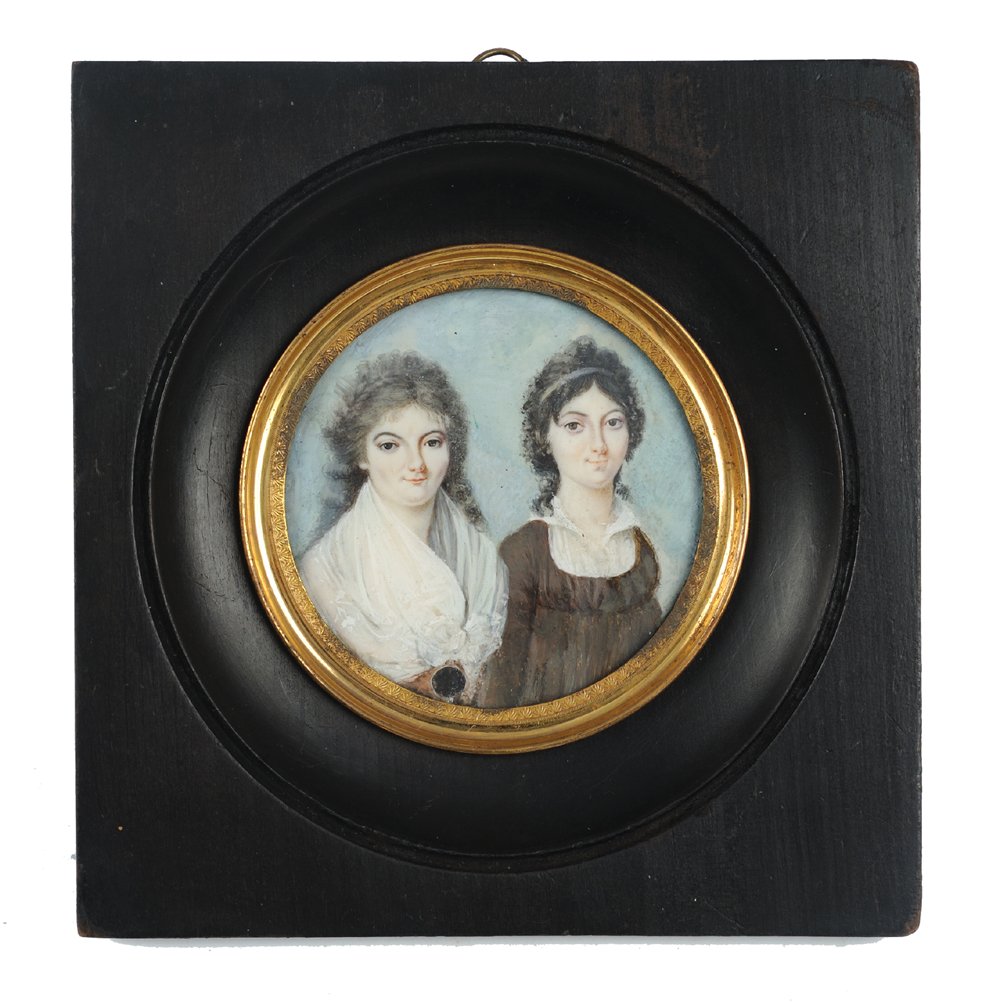
Amelie-Maxime-Rosalie de Grasse and Melanie-Veronique-Maxime de Grasse
ca. 1796-1802The American Revolution Institute of the Society of the Cincinnati
This watercolor-on-ivory miniature portrays Amelie-Maxime-Rosalie de Grasse (d. 1799) and Melanie-Veronique-Maxime de Grasse (d. 1799), the daughters of French admiral François-Joseph-Paul, comte de Grasse, whose naval victory in the Battle of the Chesapeake sealed the fate of the British army at Yorktown. This portrait miniature was painted in Charleston, South Carolina, possibly by Monsieur Geslain, a French artist.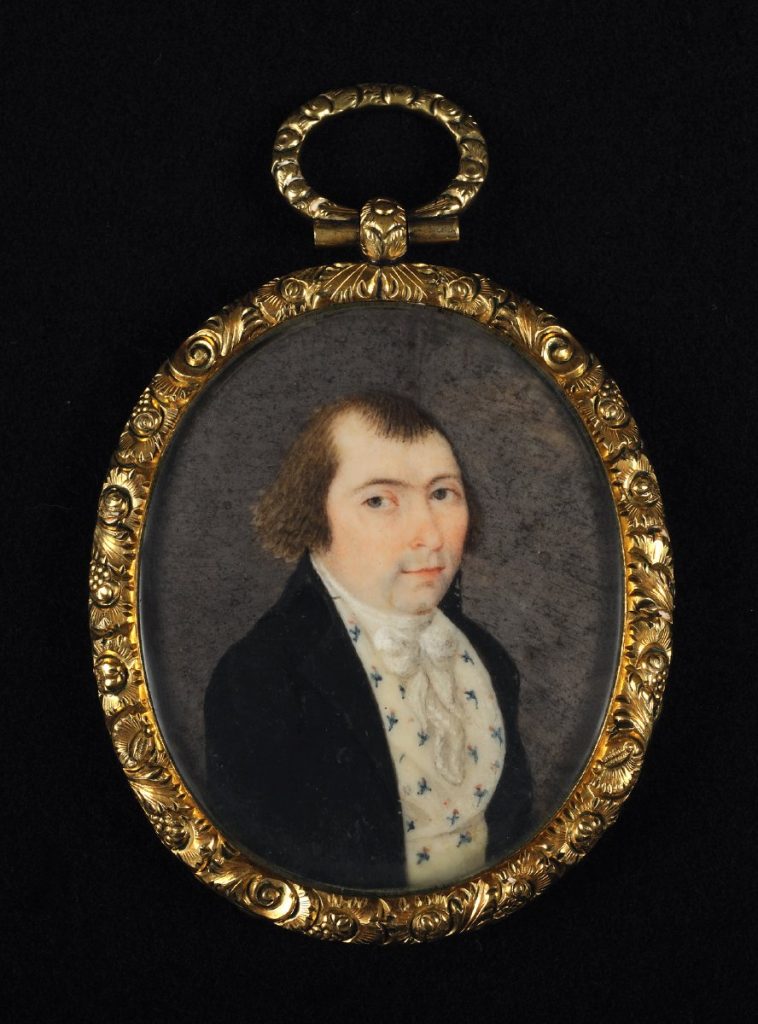
Baron Frederick Henry Weissenfels and Mrs. Mary Shumur Weissenfels
ca. 1770-1775The American Revolution Institute of the Society of the Cincinnati
frontWatercolor-on-ivory portrait miniatures of Baron Frederick Henry Weissenfels (1728-1806), an officer in the New York Continental Line during the Revolutionary War and original member of the New York State Society of the Cincinnati, and Mrs. Mary Shumur Weissenfels (ca. 1735-1775), his wife, are by an unidentified artist, ca. 1770-1775. The portraits are set back-to-back on opposite sides of a single case.
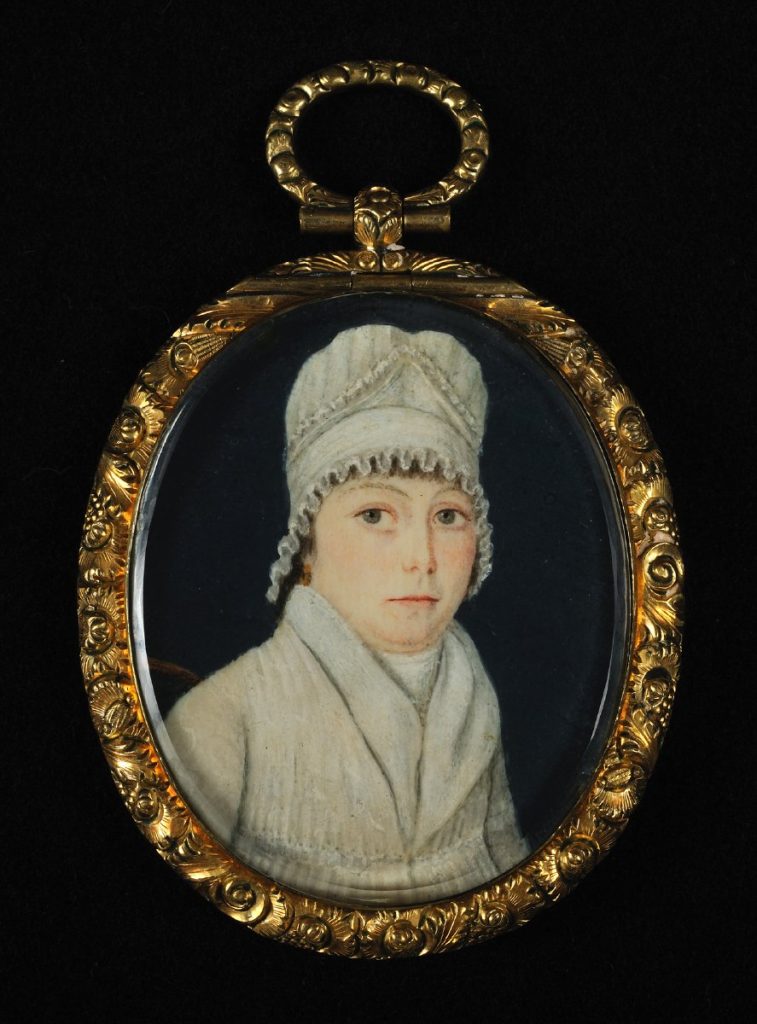
Baron Frederick Henry Weissenfels and Mrs. Mary Shumur Weissenfels
ca. 1770-1775The American Revolution Institute of the Society of the Cincinnati
backWatercolor-on-ivory portrait miniatures of Baron Frederick Henry Weissenfels (1728-1806), an officer in the New York Continental Line during the Revolutionary War and original member of the New York State Society of the Cincinnati, and Mrs. Mary Shumur Weissenfels (ca. 1735-1775), his wife, by an unidentified artist, ca. 1770-1775. The portraits are set back-to-back on opposite sides of a single case.
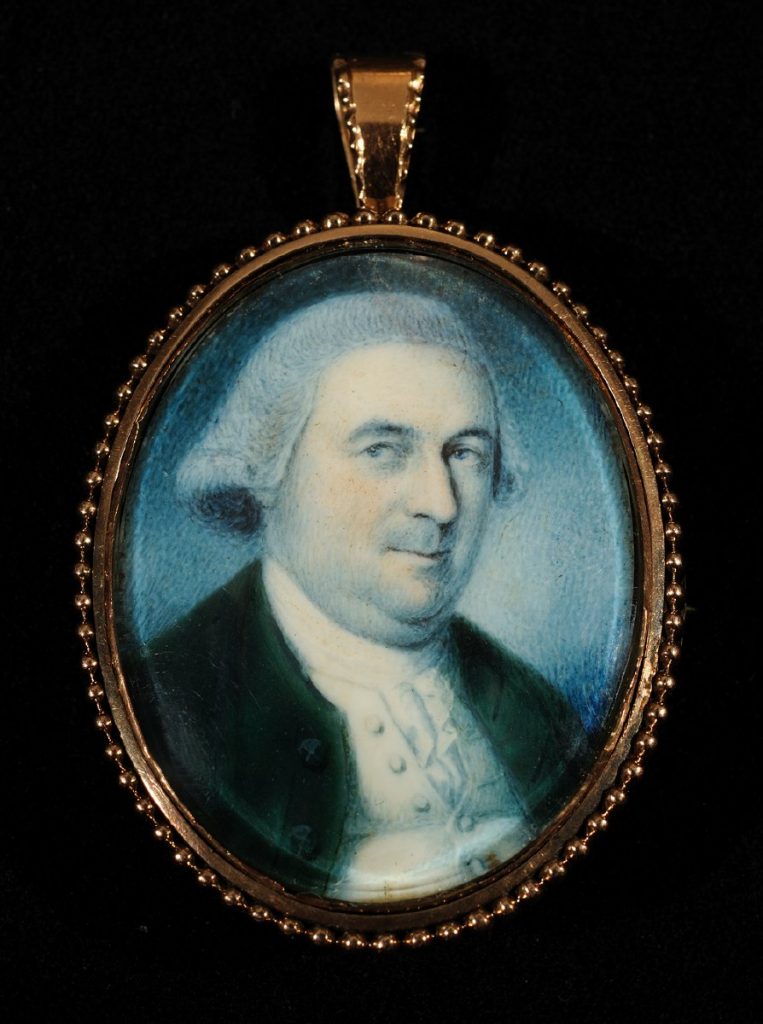
Burwell Bassett
Charles Willson Peale
1778 and 1793The American Revolution Institute of the Society of the Cincinnati
frontThis watercolor-on-ivory portrait miniature of Burwell Bassett (1734-1793), delegate to the Virginia Convention during the Revolutionary War, was painted by Charles Willson Peale (1741-1827) in 1778.
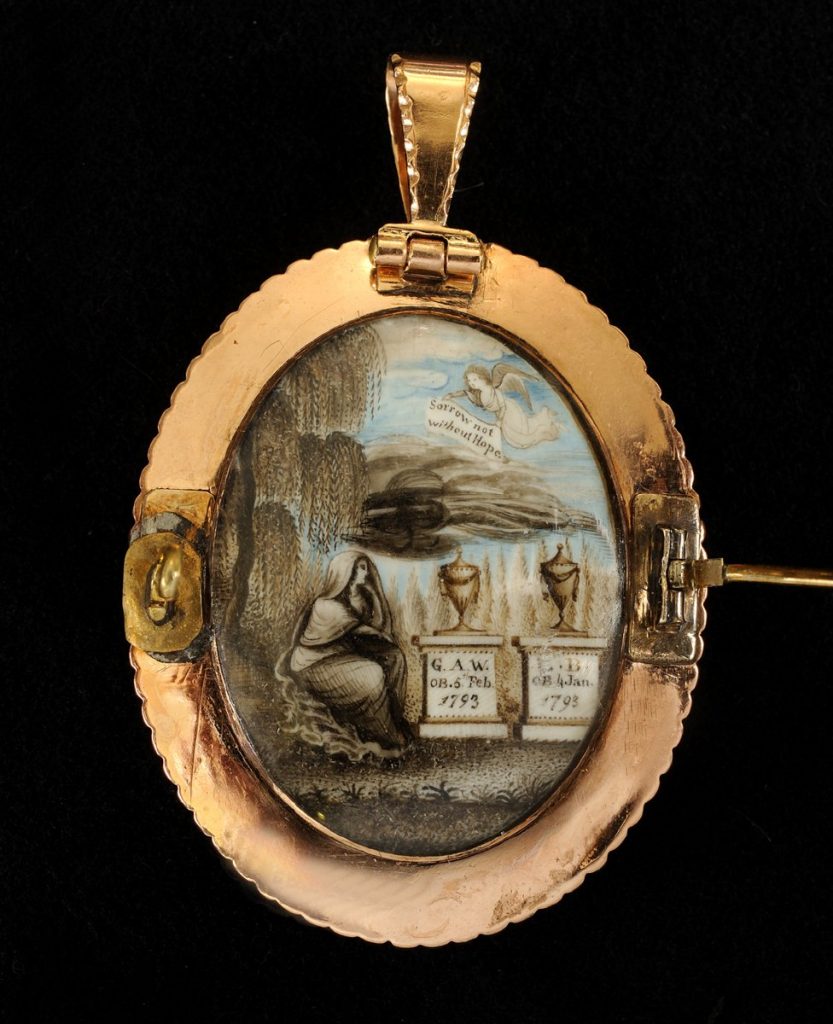
Burwell Bassett
Charles Willson Peale
1778 and 1793The American Revolution Institute of the Society of the Cincinnati
backThe back of the miniature case contains an oval, watercolor-on-ivory mourning scene painted by an unidentified American artist, 1793. The scene memorializes Burwell Bassett (the subject of the portrait on the front of the miniature) and George Augustine Washington (1763-1793), an officer in the Continental Army during the Revolutionary War, an original member of the Society of the Cincinnati in the State of Virginia, and the first husband of Frances Bassett Washington Lear (1767-1796, daughter of Burwell Bassett). A woman in mourning sits beneath a weeping willow tree to the left of two funerary monuments, each consisting of a rectangular base topped with an urn. Some of the decoration of the foliage at the left contains chopped hair. The base of the monument on the left side is inscribed "G.A.W. OB. 5th Feb. 1793." The base of the monument on the right side is inscribed "B.B. OB. 4 Jan. 1793." Dark clouds gather directly above the two monuments. Above are white clouds and a light blue sky, with a winged female figure holding a banner which reads "Sorrow not with[out] Hope."
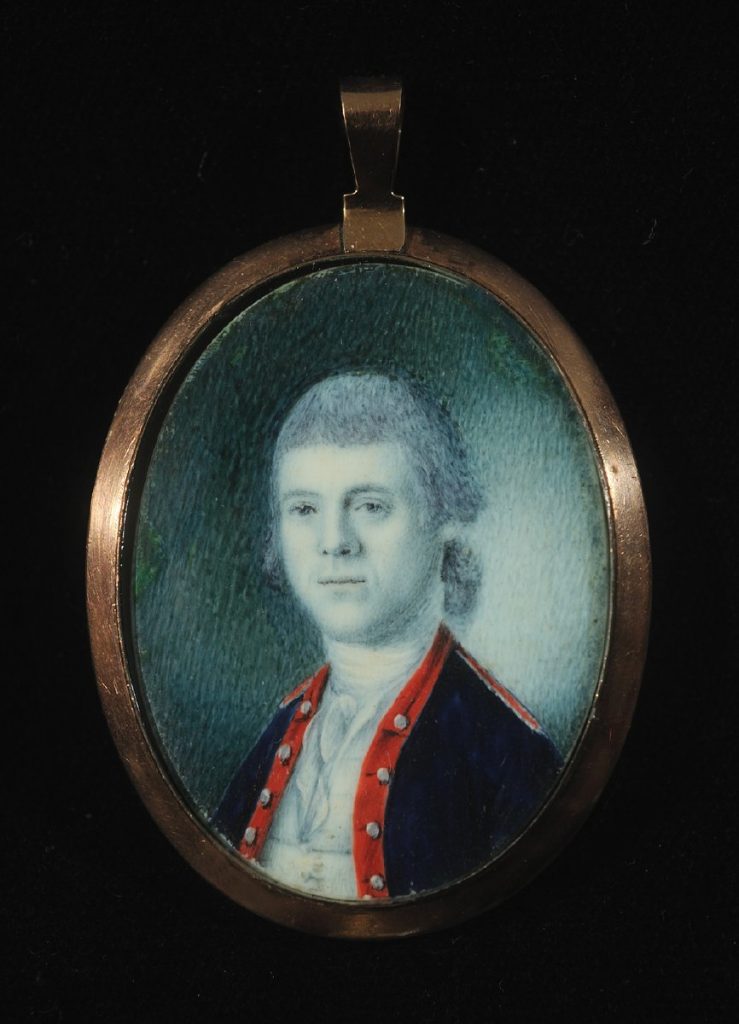
Capt. William Henry Bruce
Charles Willson Peale
ca. 1777-1780The American Revolution Institute of the Society of the Cincinnati
frontWatercolor-on-ivory portrait miniature of William Henry Bruce (1752-1825), an officer in the Maryland Continental Line during the Revolutionary War and original member of the Society of the Cincinnati of Maryland, by Charles Willson Peale (1741-1827), ca. 1777-1780. Bruce wears a military uniform of the Maryland Continental Line consisting of a dark blue coat with red facings, silver-colored buttons, and a silver-trimmed red epaulet on each shoulder.
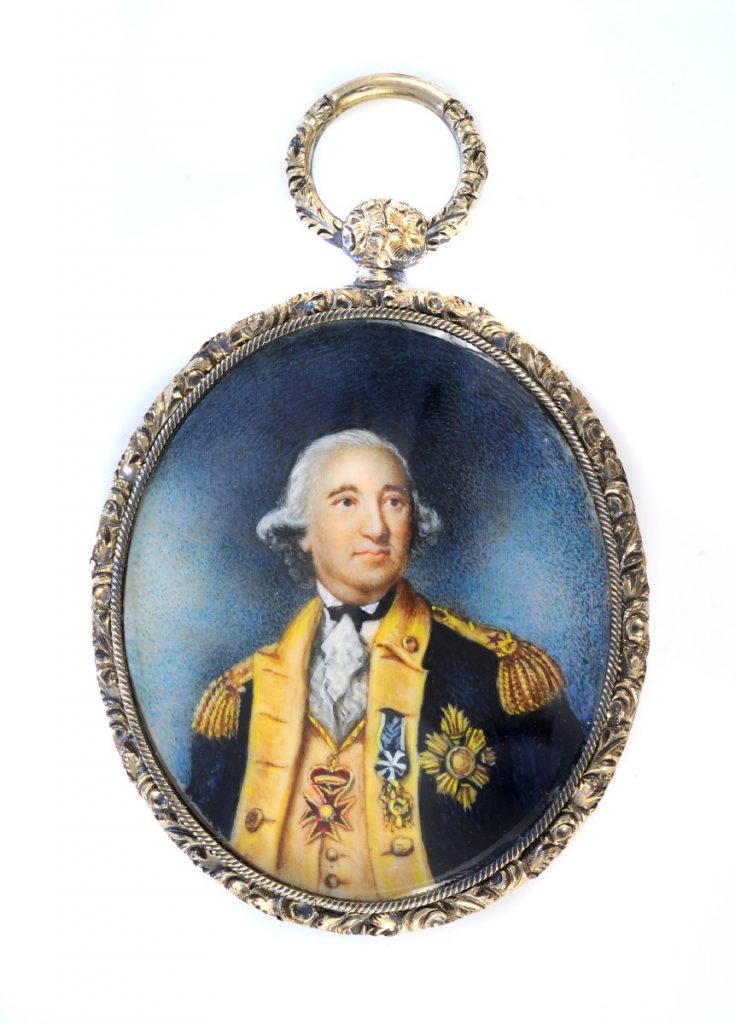
Friedrich Wilhelm, baron von Steuben
nineteenth-centuryThe American Revolution Institute of the Society of the Cincinnati
frontWatercolor-on-ivory portrait miniature of Friedrich Wilhelm, baron von Steuben (1730-1794), a Continental Army general during the Revolutionary War and an original member of the New York State Society of the Cincinnati, by an unidentified artist after the original by Ralph Earl (1751-1801). He wears the uniform of a Continental Army major general consisting of a dark blue coat with a buff collar and lapels and two gold epaulets with one star each. He also wears three medals including the Society of the Cincinnati Eagle insignia suspended from a blue-and-white ribbon.
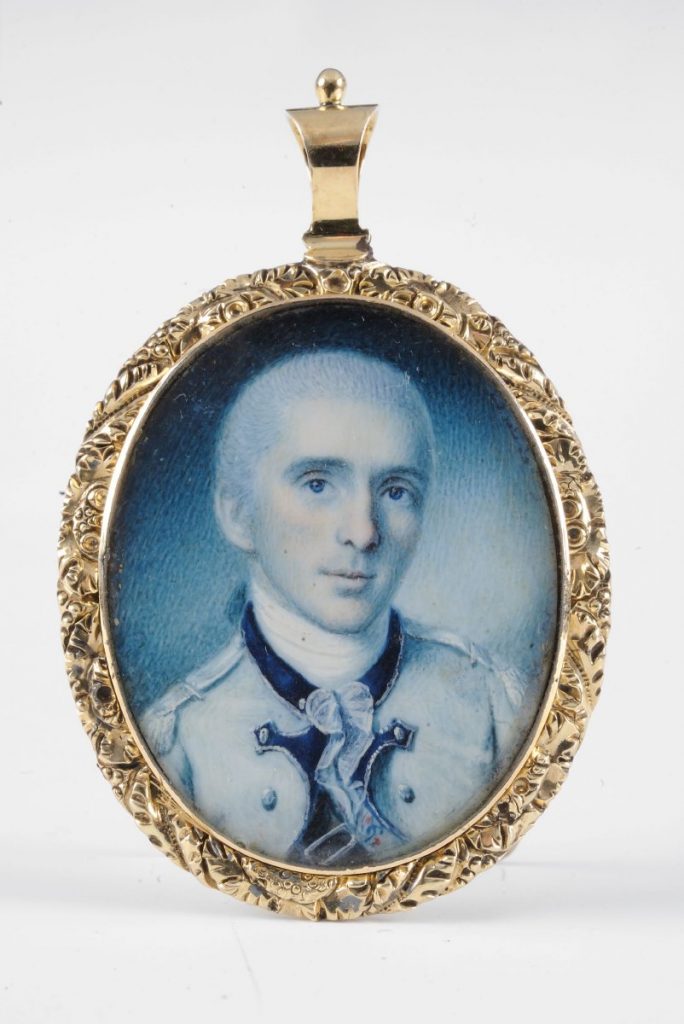
George BaylorCharles Willson Peale
Spring 1778
Charles Willson Peale
Spring 1778The American Revolution Institute of the Society of the Cincinnati
frontWatercolor-on-ivory portrait miniature of George Baylor (1752-1784), an officer in the Continental Dragoons during the Revolutionary War and an original member of the Society of the Cincinnati in the State of Virginia, painted by Charles Willson Peale (1741-1827) in the spring of 1778 at Valley Forge, Pennsylvania. He wears the military uniform of a dragoon officer, consisting of a white coat (with dark blue facings, silver buttons, and a silver epaulet on each shoulder) and a dark-colored sword belt with a silver buckle visible underneath the coat.
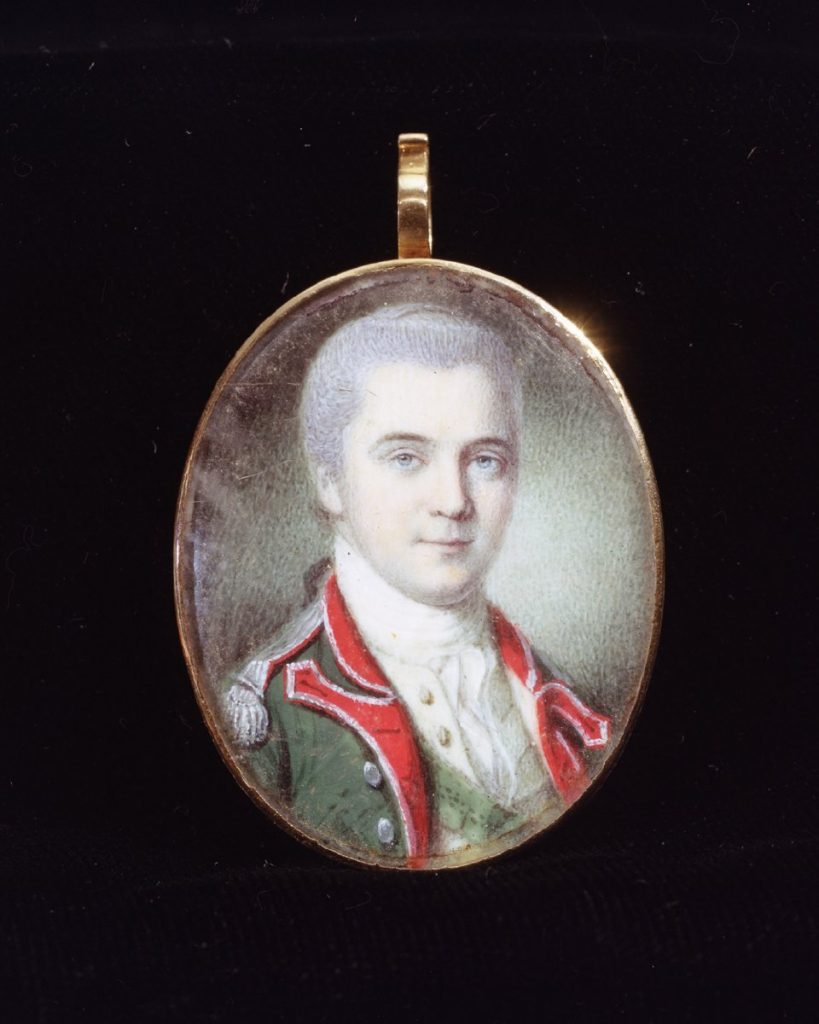
James Hamilton
Charles Willson Peale
ca. 1778-1779The American Revolution Institute of the Society of the Cincinnati
This watercolor-on-ivory portrait miniature of James Hamilton (1750-1833), an officer in the Continental Army during the Revolutionary War and an original member of the State Society of the Cincinnati of Pennsylvania, was painted by Charles Willson Peale (1741-1827), ca. 1778-1779. Hamilton wears the military uniform of the Pennsylvania Continental Line, consisting of a green coat with red lapels trimmed in silver, silver buttons, and a silver epaulet on the right shoulder, with a green ribbon worn diagonally across his chest under the coat.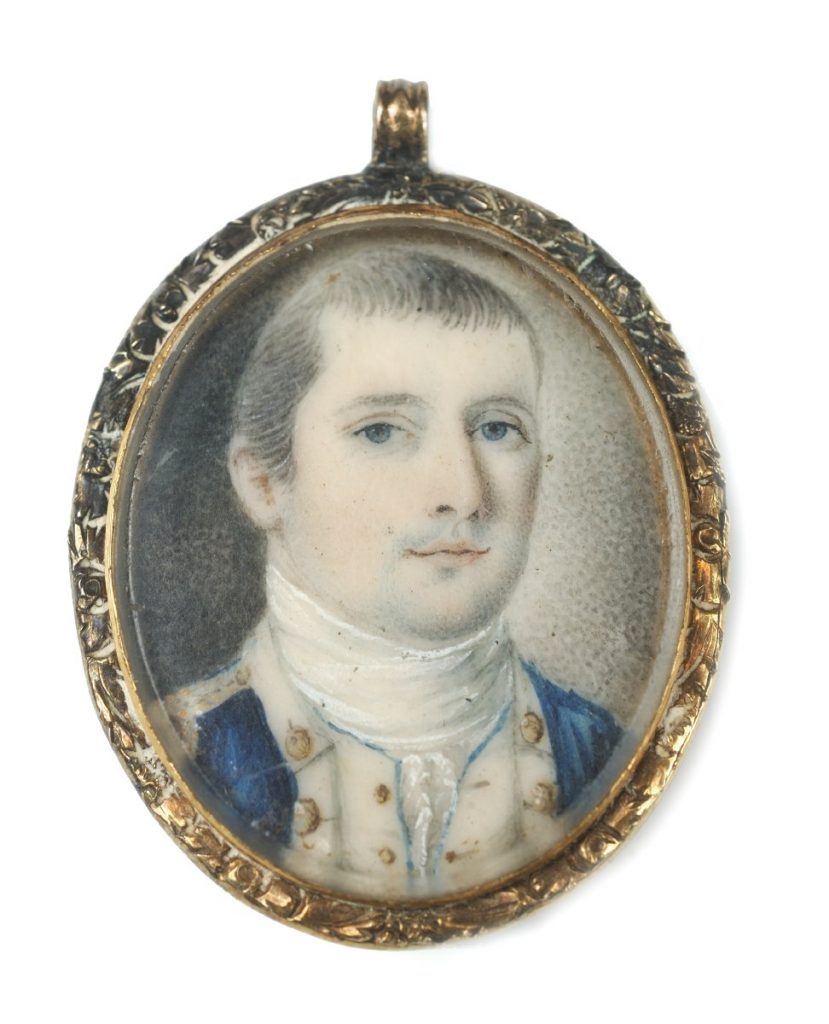
Joseph Fox
ca. 1777-1779The American Revolution Institute of the Society of the Cincinnati
Watercolor-on-ivory portrait miniature of Joseph Fox (1749-1827), an officer in Lee's and Jackson's Additional Continental Regiments and the Massachusetts Continental Line during the Revolutionary War and an original member of the Society of the Cincinnati in the State of Connecticut, painted by an unidentified artist, ca. 1777-1779.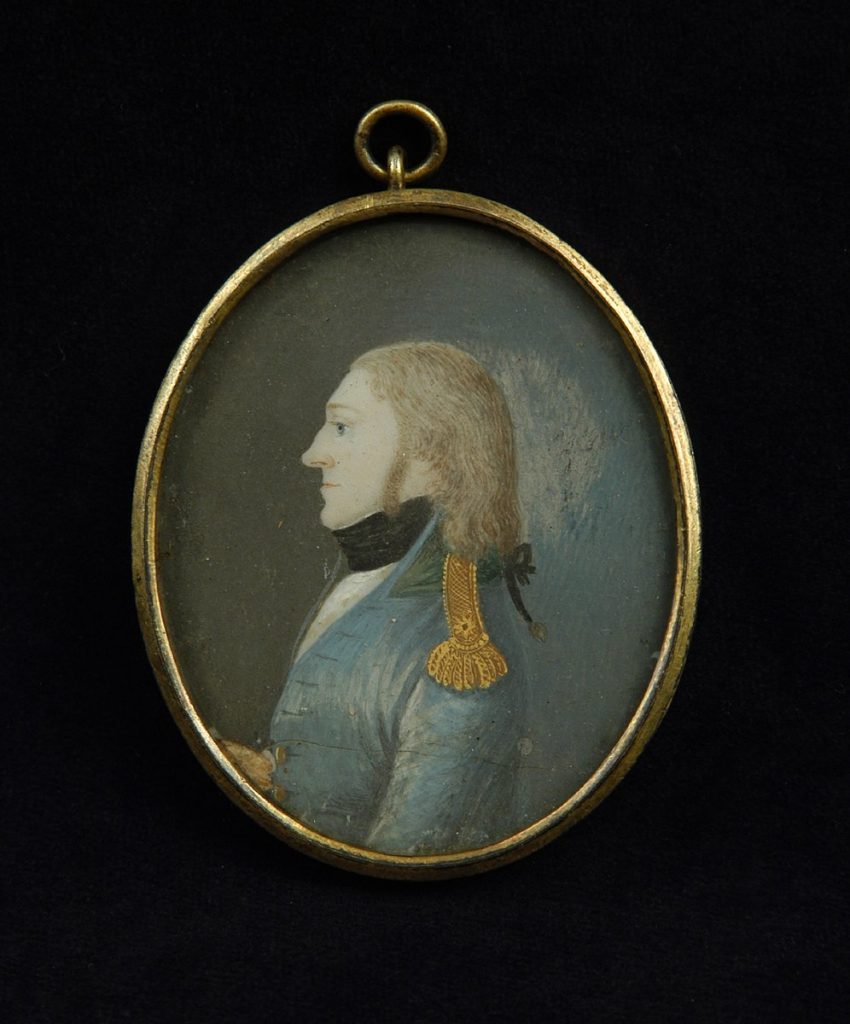
Marie-Joseph-Paul-Yves-Roch-Gilbert du Motier, marquis de Lafayette
late eighteenth-early nineteenth centuryThe American Revolution Institute of the Society of the Cincinnati
Watercolor-on-ivory portrait miniature of Marie-Joseph Gilbert du Motier, marquis de Lafayette (1757-1834), a major general in the Continental Army during the Revolutionary War and an original member of the Société des Cincinnati de France, by an unidentified French artist. Lafayette is wearing a military uniform consisting of a blue coat with gold epaulettes. The back is made of tan leather and marked "General Lafayette."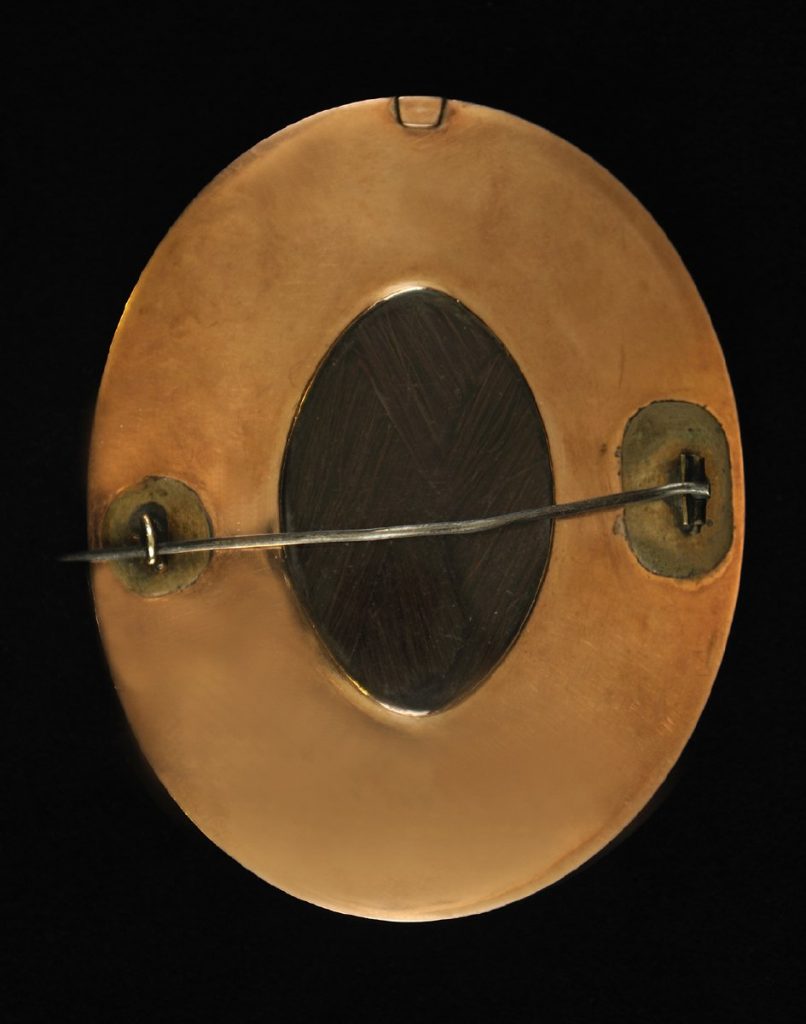
Nancy McCampbell Hays
Francis Rabineau
1804The American Revolution Institute of the Society of the Cincinnati
backThe back of the miniature case has an oval opening revealing dark brown hair behind an oval cover glass. A metal hinged horizontal pin and clasp extends across the oval opening.
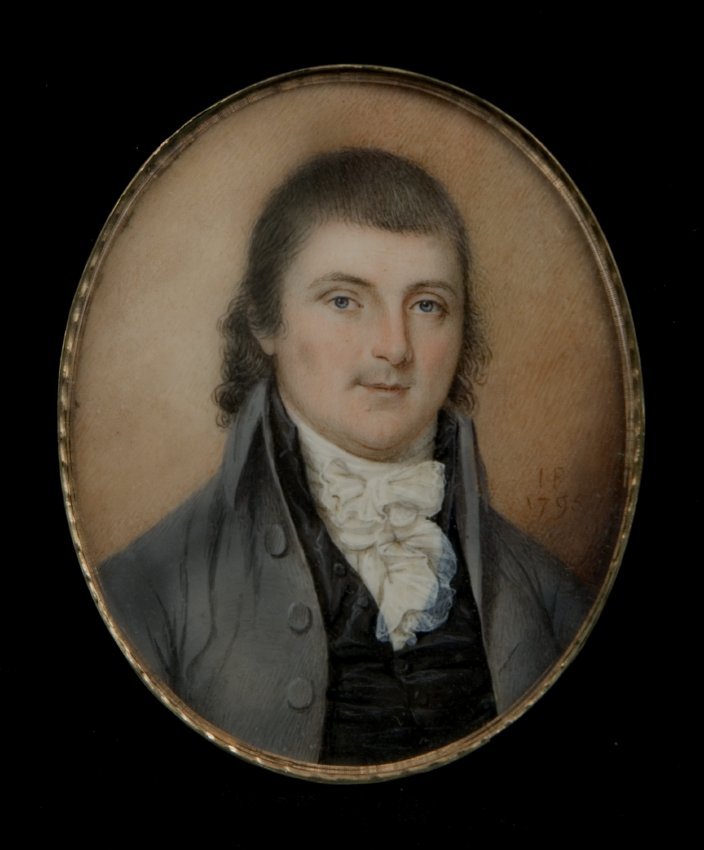
Thomas Posey
James Peale
1795The American Revolution Institute of the Society of the Cincinnati
frontWatercolor-on-ivory portrait miniature of Thomas Posey (1750-1818), a lieutenant colonel in the Virginia Continental Line during the Revolutionary War and an original member of the Society of the Cincinnati in the State of Virginia, by James Peale (1749-1831), 1795.
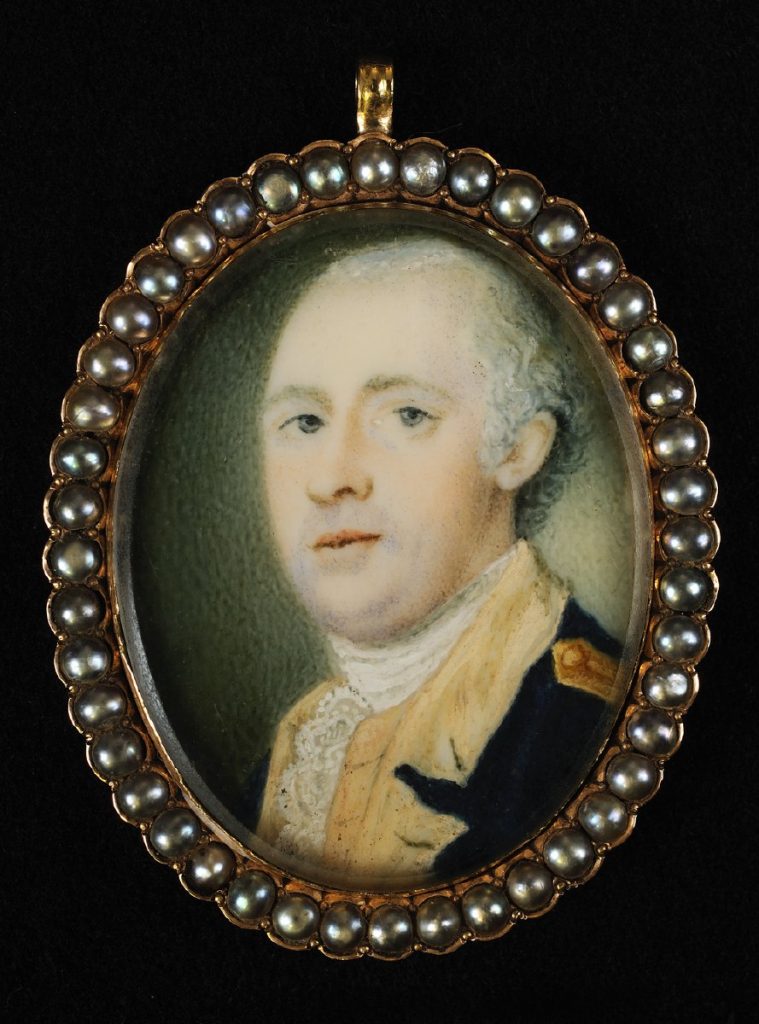
William Palfrey
ca. 1776-1780The American Revolution Institute of the Society of the Cincinnati
Watercolor-on-ivory portrait miniature of William Palfrey (1741-ca. 1780), an officer in the Continental Army and United States consul to France during the Revolutionary War, by an unidentified American artist, ca. 1776-1780. Palfrey wears the uniform of the general staff of the Continental Army consisting of a blue coat with buff-colored facings and a gold epaulet. A red-trimmed label on the outer lid has a handwritten inscription in ink: "Col. Palfrey, ggg grandfather of...C.L. [rest of name illegible]."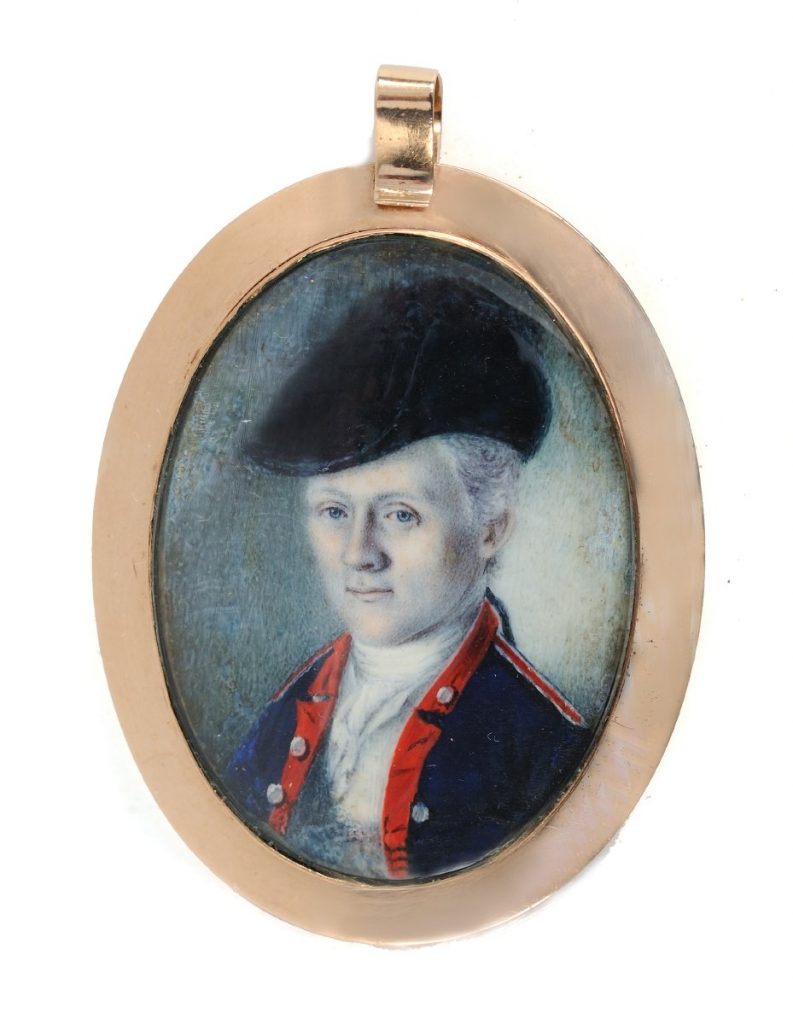
William Truman Stoddert
Charles Willson Peale
ca. 1778The American Revolution Institute of the Society of the Cincinnati
frontWatercolor-on-ivory portrait miniature of William Truman Stoddert (1759-1793), an officer in the Maryland Continental Line during the Revolutionary War and an original member of the Society of the Cincinnati of Maryland, by Charles Willson Peale (1741-1827), ca. 1778. Stoddart is wearing the uniform of a Maryland Continental Line officer consisting of a blue coat with red facings, round silver-toned buttons, red shoulder straps edged in silver lace and a light blue sash worn diagonally under the coat.
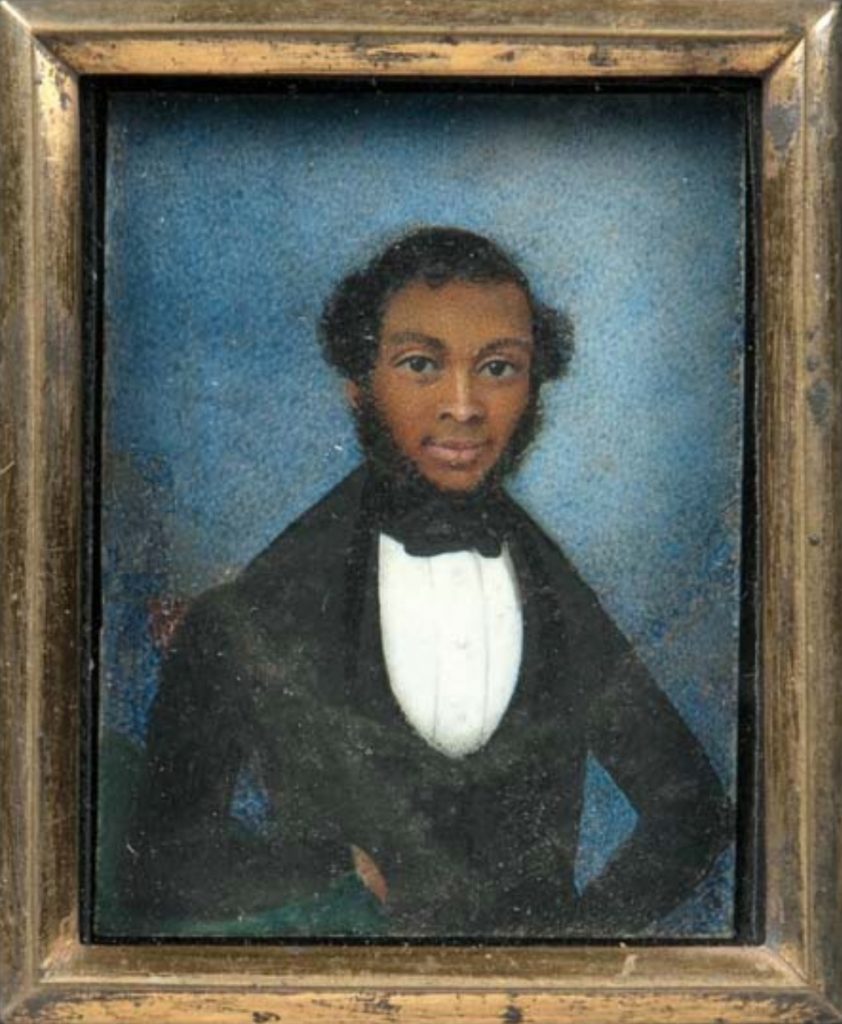
Unknown Sitter
ca. 1825-1850Private Collection
Thousands of African Americans served in the armed forces during the Revolutionary War, but no portrait miniatures of them are known. This portrait miniature of an African American man, painted on ivory, dates from the second quarter of the nineteenth century.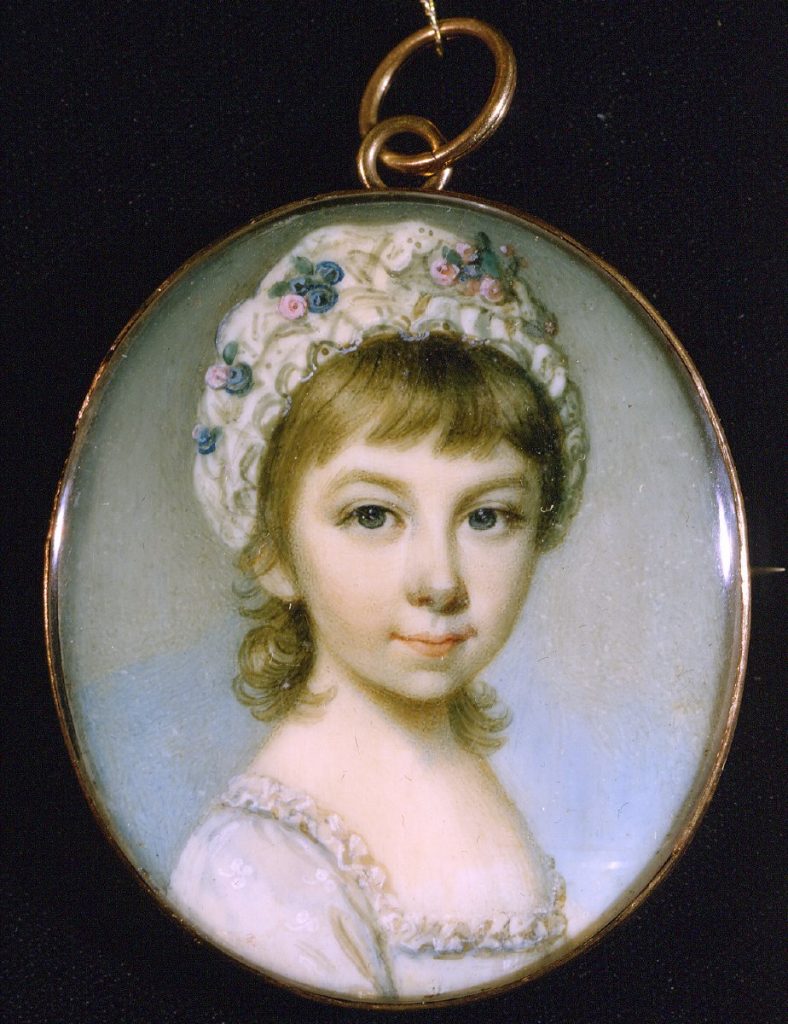
Margaret Izard (Mrs. Gabriel Manigault)
Jeremiah Meyer
ca.1774The Gibbes Museum of Art
The eldest child of Ralph and Alice DeLancey lzard, Margaret (1768-1824) was born in Charleston but spent much of her childhood in England and France with her parents. In 1783, Margaret married Charleston's noted gentleman-amateur architect, Gabriel Manigault (1758-1809), son of Peter and Elizabeth Wragg Manigault. They lived in Charleston and at his plantation, The Oaks, in St. James, Goose Creek Parish. In 1805, they moved to Clifton, an estate near Philadelphia, where Gabriel Manigault died in 1809. After his death Margaret spent much of her time at her house in Philadelphia on Spruce Street near that of her brothers Colonel George lzard and Ralph lzard, Jr., her sister Mrs. William Alien Deas (Anne lzard), and her mother whose house was "between Ninth and Tenth streets." The area was known as "Carolina Row." Jeremiah Meyer a native of Germany, studied in London and attained the position of miniature portrait painter to the queen and painter in enamel to the king in 1764. He was a founding member of the Royal Academy where he exhibited from 1764 to 1783. Meyer's miniatures are characterized by light colors and extraordinary detail. Two other portraits of Margaret Manigault are known to exist, one by Gilbert Stuart painted in 1794 along with that of her husband (Albright-Knox Museum, Buffalo), and a miniature by Edward Malbone dated 1801 (Gibbes Museum of Art).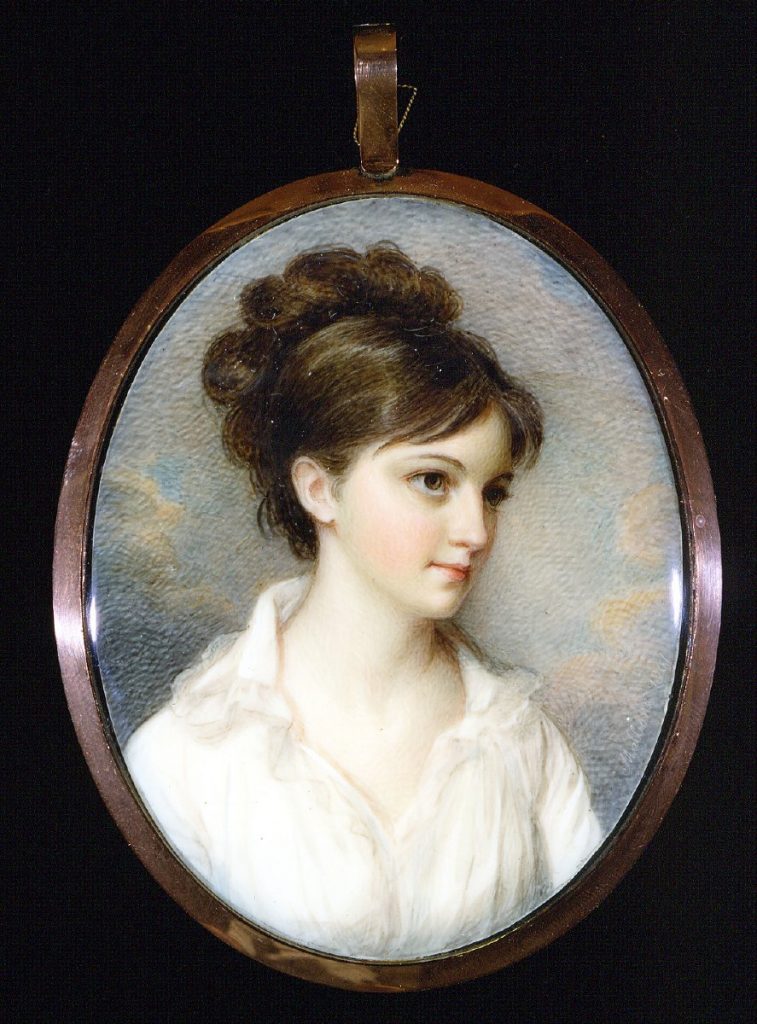
Eliza Izard (Mrs. Thomas Pinckney, Jr.)
Edward Greene Malbone
1801The Gibbes Museum of Art
Eliza, the lovely daughter of Ralph Izard, Jr., was painted twice by Malbone during his December 1801—May 1802 visit to Charleston. Her mother is identified in Malbone's account book for December, 1801, as paying $275, probably for three or four portraits. During this time Eliza was being courted by Thomas Pinckney who was most eager for her to be painted by Malbone. They married in December, 1803.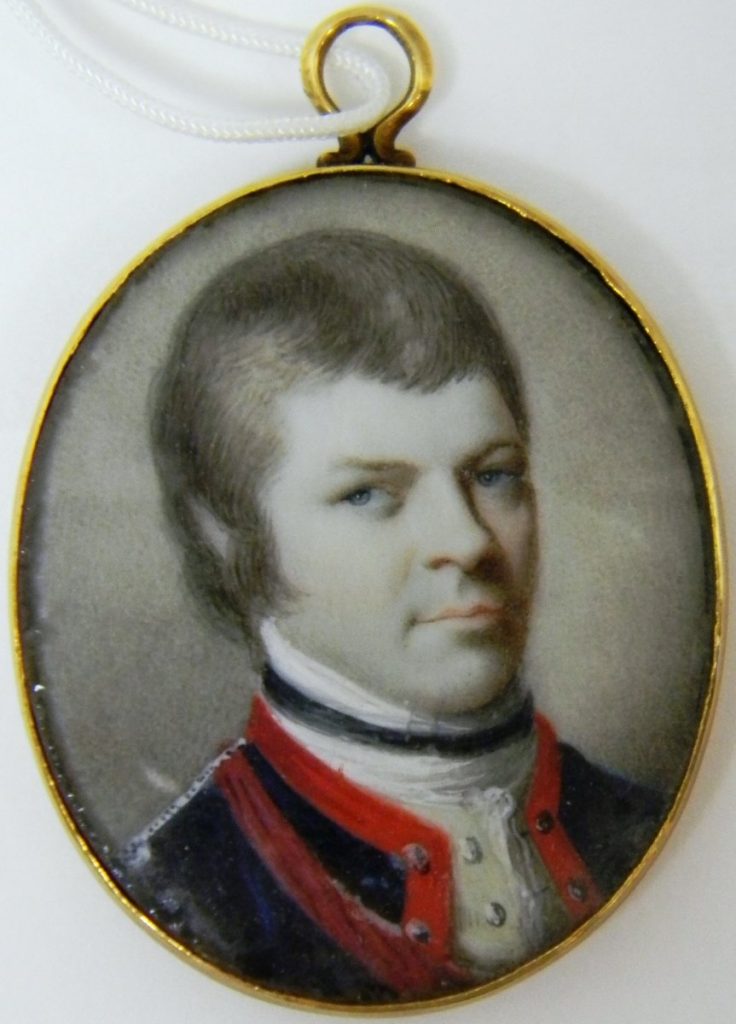
John Blake
Henry Benbridge
ca. 1775The Gibbes Museum of Art
The son of Revolutionary naval hero Edward Blake and his wife Jane Savage, John Blake (1752-1810) was a merchant in partnership with his father importing slaves to Charleston. He inherited the Bluff Plantation on Wappoo Creek near Charleston. Blake served as a lieutenant in the Second South Carolina Regiment and was one of the Continental soldiers captured by British forces on 12 May 1780, during the attack on Charleston. He was sent to St. Augustine, Florida, on the prison ship Torbay, and acted as spokesman for the prisoners of war to obtain necessary supplies which were paid for by the familes of the prisoners. After his release, Blake was again imprisoned, this time on the British schooner Pack Horse, and his family was banished from Charleston for refusing to take an oath of allegiance to the British crown. After the Revolutionary War, Blake was elected to the South Carolina General Assembly and was the first president of the State Bank in Charleston. His gravestone at the family cemetery at the Bluff is inscribed, 'Sacred/to the memory of John Blake, Esq. who died on the 2d. of July 1810, aged 58 years. A Patriot of the American Revolution and a Brave active and skillful officer.'